

MAHURANGI CRUISING CLUB YEARBOOK 2025

FIERY CROSS
Frank Young recalls growing up on a boat with a canting keel

GERRY CLARK
Sailing deep into the Southern Ocean on a bird-watching voyage
TONNANT
A major refit and a sail around New Zealanddoes life get better?
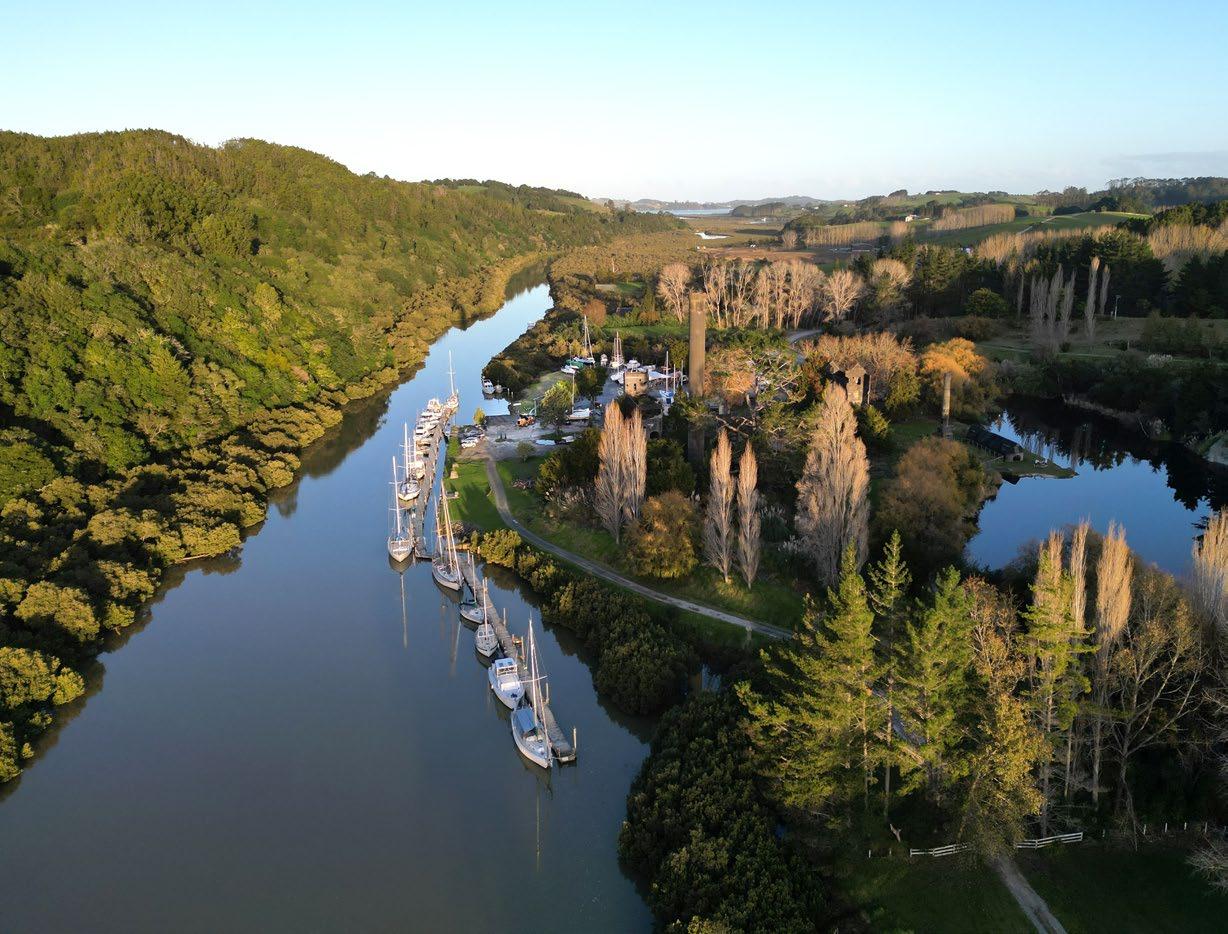
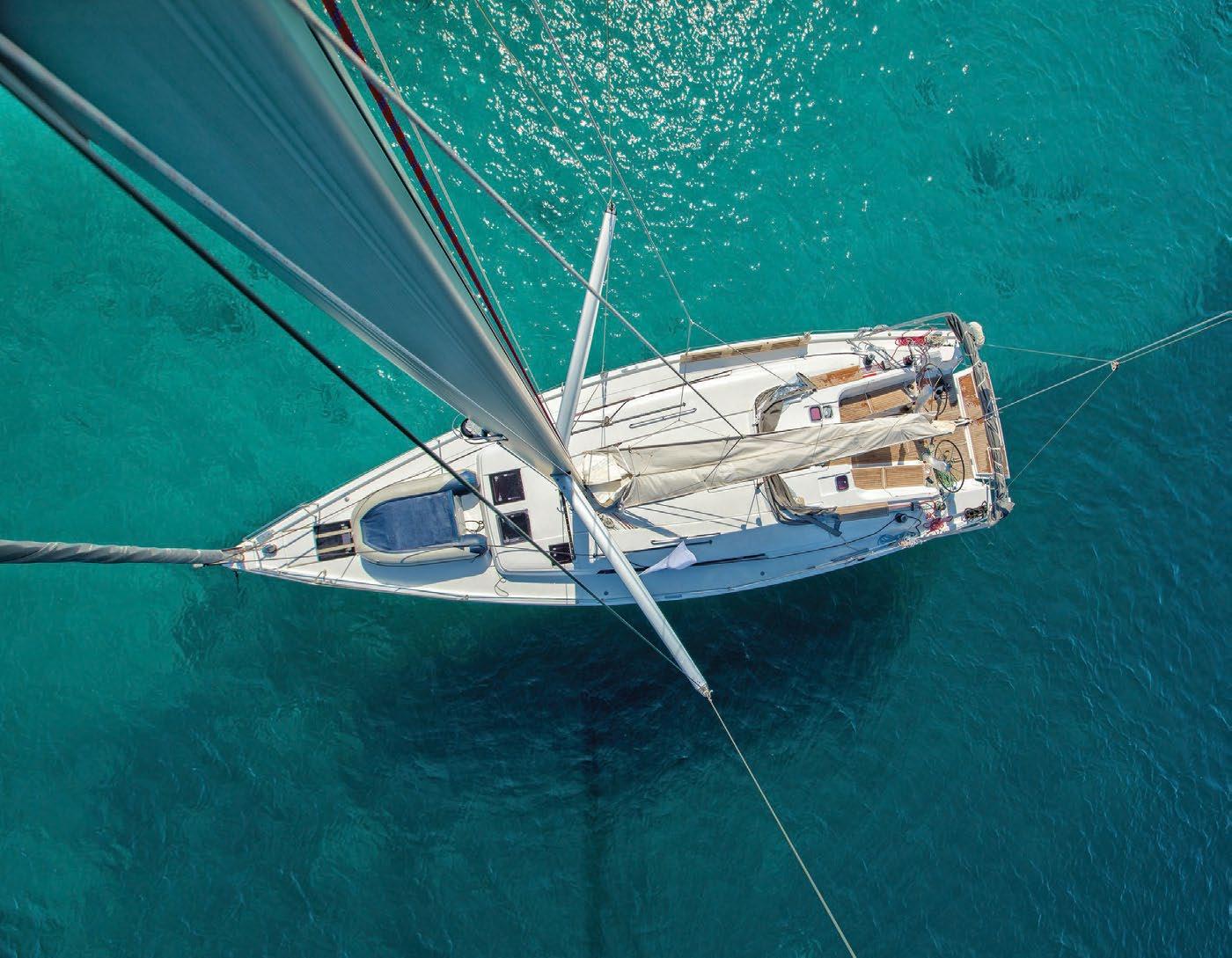
Easy breezy
Specialist boat insurance allows you to protect your yacht and spend more time on the water, worry free. We’re on the water too. See you out there!
Local experts making insurance easy.






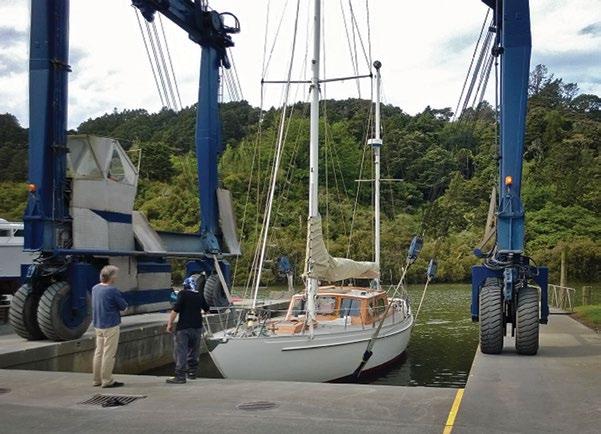
SAFETY COMPANIONS TO TAKE ON YOUR NEXT ADVENTURE
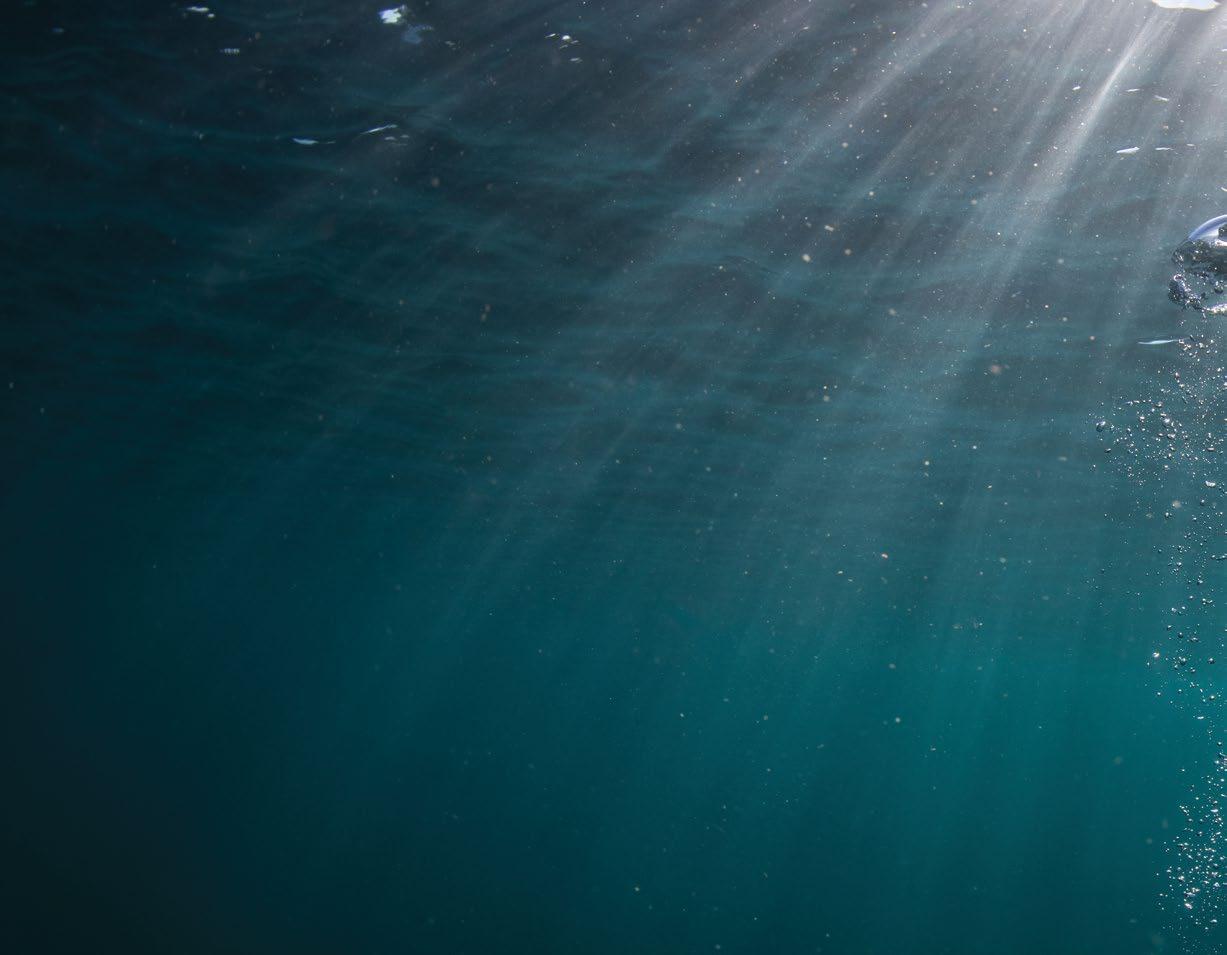
COMFORT FOR THE WHOLE FAMILY OR THE OFFSHORE ADVENTURE!
DECKVEST LITE & LITE+
Available in a range of colours the jackets designed to be lightweight, low profile added comfort. The Deckvest LITE+ range has an integrated deck safety harness with a soft loop safety line attachment point.
DECKVEST 6D
Designed for open water, coastal and offshore activities. Available in 170N & 275N models
NEMO
Recommended for infants more than 15kgs and children between 15-30kg. Comes with a back harness for a safety line (keeps small hands away from the clips) and has a front hand-only grab handle for adults to life the child to safety, cleverly designed to reduce snagging risk.
FIDO
Designed with the same precision and quality as marine safety equipment, the FIDO flotation vest provides buoyancy and comfort, allowing dogs to embrace adventures with confidence.

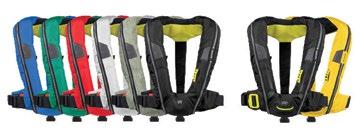


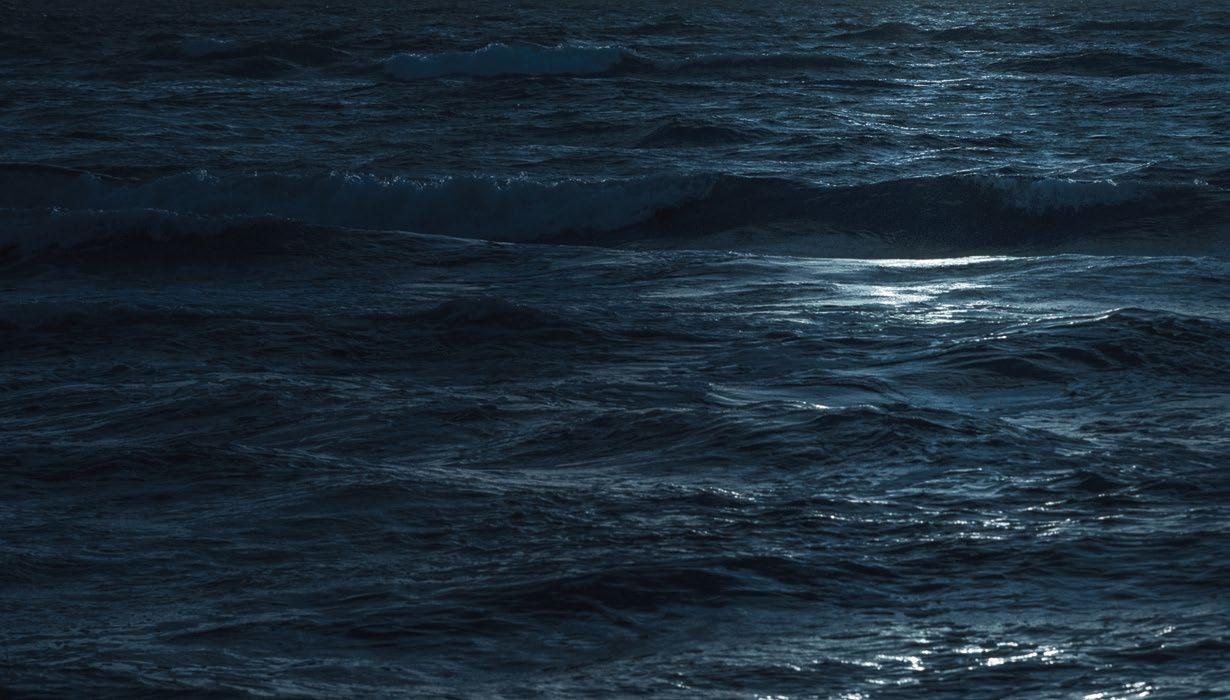
PROVEN TO SAVE LIVES
PLB1
Compact, light and the smallest personal locator beacon in the world utilises advanced technology to broadcast your distress signal to global search and rescue authorities, ensuring swift assistance when it matters most.
EPIRB1
Your lifeline on the water. Fitted to your vessel, it sends a distress signal with precision, facilitating a rapid response to your location.
MOB1
The best chance of rapid rescue if you fall overboard comes from your own vessel. Once activated your MOB1 will transmit an alert to all AIS receivers and AIS enabled plotters in the vicinity. The integrated GPS ensures precise location is sent to your vessel and any others that may be able to assist.
PLB3
Multiple levels of integrated signalling technology including 406 MHz and GNSS (GPS, Galileo, Glonass) positioning. The addition of AIS (Automatic Identification System) transmissions means the PLB3 AIS Personal Locator Beacon simultaneously alerts all vessels equipped with AIS transponders within the VHF radio range of the PLB’s distress position. This greatly increases both the likelihood and speed of rescue since nearby vessels receive the alerts.




Deckvest 6D Nemo
Fido PLB EPIRB1 PLB3 MOB1

MAHURANGI CRUISING CLUB
Encouraging cruising and the ownership, use and restoration of wooden boats
Warkworth, New Zealand. Website: mahurangicruisingclub.org

Mahurangi Cruising Club
Issue 24 - December 2024 - ISBN 1174-9725


DESIGN, PRODUCTION & EDITING
STEPHEN HORSLEY - Ngatira srhorsley@gmail.com M: 027 280 7497

SUB EDITORS & PROOFREADING TEAM
Jill Hetherington - Tuna
Margaret Howson FACT CHECKING
Martin Howson
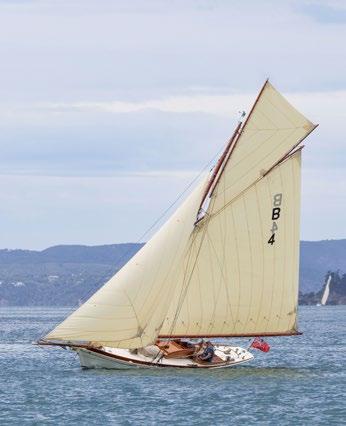


EDITOR’S NOTES
I came to the realisation lately that perhaps I’m in the category of a person who prefers to work tirelessly on his boat rather than go sailing. Perish the thought! But reality you can’t scupper. It’s been five years since trucking my beloved Ngatira home to fix a few leaks. A worldwide pandemic and some other work commitments slowed the process somewhat and the list of jobs developed and grew into a tome of enormous proportions. Finally, at the time of writing this, she is only weeks away from relaunching. Enjoyable? Sometimes. Frustrating? Definitely, but very satisfying and a certain pride at what I have achieved encircles me. I only hope I do get to enjoy being on the water and not worry about scratching the varnish!
We all have a certain pride in our boats no matter what the shape or size and I would like to remind you that this Regatta is sailed under COLREGs - Preventing Collisions at Sea.
Rule 5 requires that “every vessel shall at all times maintain a proper look-out by sight and hearing as well as by all available means appropriate in the prevailing circumstances and conditions so as to make a full appraisal of the situation and of the risk of collision
So technically, luffing a boat is not the proper sailing etiquette. Particularly in the starting procedures where things can get a little tense. Please be mindful of this.
It was sad news for the Club to farewell Helen Johnson earlier in the year, a founding member and partner of Peter Oxborough. She worked unstintingly as the Club treasurer from the very beginning and at the beach entry tent every year. Helen was ‘old school’ and computers were not her thing, all records and financial reports were meticulously handwritten.
As always a huge thanks to our regular contributors and Roger Mills for his stunning photos all of which make this Yearbook a decent publication. I know I can be a bit like a terrier chewing on a trouser leg to get those words out of you but we are grateful when you do respond with your wonderful stories and tales.
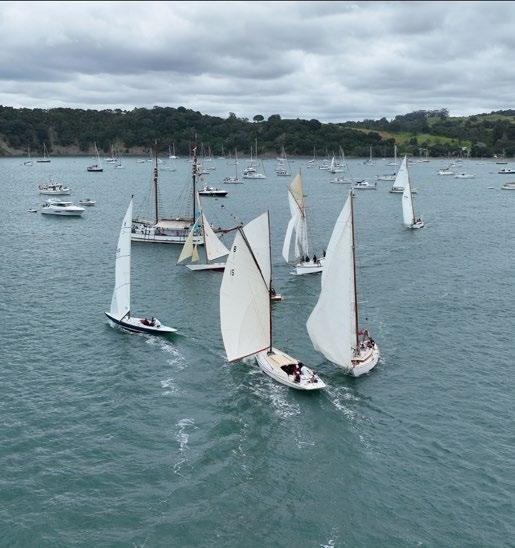
Cover: The newly restored Rogue.
Photo: Roger Mills. Hummingbird Video and Photography Proudly printed by

MAHURANGI CRUISING CLUB
OFFICE HOLDERS and Committee 2024 - 2025




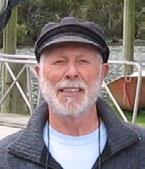

COMMITTEE
Selene Buttle
John and Carolyn Caukwell
Jacques De Kervor
Jill Hetherington
Ngaire Hopwood
Stephen Horsley
Margaret Howson
Svetlana and Boris Penchev
CONTACT:
MAHURANGI CRUISING CLUB office@mahurangicruisingclub.org
COMMODORE & SECRETARY office@mahurangicruisingclub.org
VICE COMMODORE hughgladwell@gmail.com
Copies of this Yearbook are available from the Club’s address at $20.00 each, or free in exchange for a copy of their Yearbook, to any club with similar interests.
Payment can be made online to 12-3095-0126805-00
ACTING CLUB CAPTAIN


TECHNICAL ADVISOR
JAMES BUTTLE Achernar

REGATTA TEAM
Handicappers
Hugh Gladwell
Richard Dodd
Yearbook Team
Start Boat
Richard Dodd
Bryan Taylor
Selene Buttle
Stephen Horsley Editor - Design & Production
Victor Hopwood Sales
Debbie Whiting Advertising
Proofing Team
Margaret Howson - Captain
Jill Hetherington - First mate
Martin Howson - Referee
SUBSCRIPTIONS
Become a member and be informed of our yearly activities.
Still the cheapest in the Southern Hemisphere $15 for the coming year.
Payment can be made online to 12-3095-0126805-00 with or without your entry fee by 12th January 2025.
RICHARD DODD
VICTOR HOPWOOD Starlight Lorax
HUGH GLADWELL Gallivant
HUGH GLADWELL Gallivant



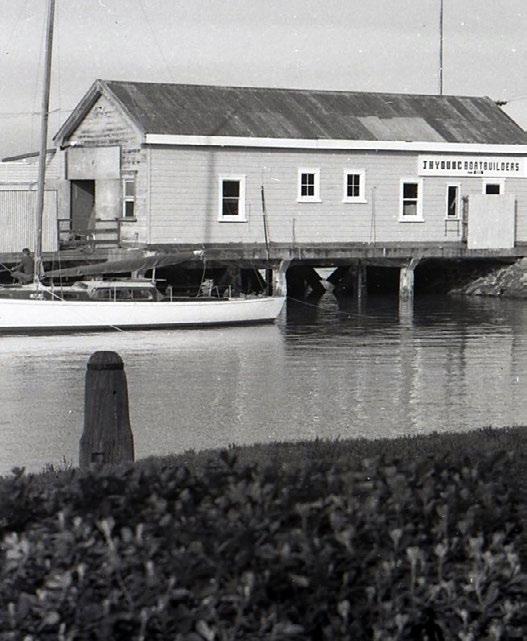


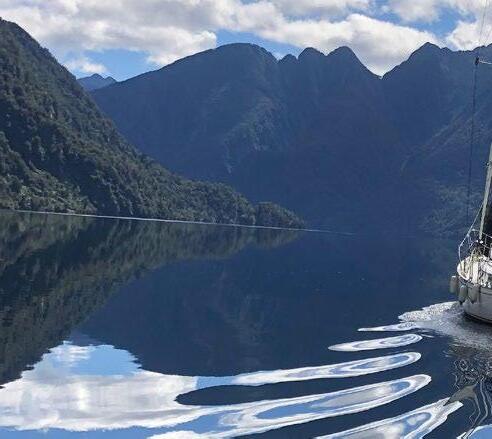



IVice Commodore’s Report 2024
t would be fair to say that the Mahurangi Cruising Club is basically an eating and drinking club with a side hustle of some occasional light air sailing. It was started by a group standing around a fire on Motutara Island in 1988 discussing how much they disliked yacht clubs. They decided to form a yacht club where there would be no points of order, no protests, no working bees and no assets. If there was any significant disagreement at any time the Club would be wound up immediately and they would forget it ever existed.
Thirty-six years on we can say that we have achieved that level of inactivity we aspired to so long ago. Other clubs in that time have built large clubhouses, hard stand areas and marinas. Our fixed assets consist of some rusty anchors and four inflatable buoys, three of which suffer from erectile dysfunction. Meetings used to be held aboard various members’ yachts, initially Sorceress in a mud berth in the Mahurangi River (near Warkworth) then Maggie, the large schooner at Sandspit. We had about 10 sailing events each year initially but have managed to whittle them down to two or three. With advancing age most of us are creek crawlers these days, sailing timidly along the coast, but the days of gales at sea during ocean passages are relived vividly, with a lot of exaggeration, at meetings which have now moved ashore.
Our bona fides as a yacht club have only been saved by this Yearbook and the Mahurangi Regatta. The Yearbook first came out in 1999 with doubt from some of us that it would ever see the light of day again, but it has continued almost every year since as a high-quality publication, with a collection of all copies now worth thousands. Someone reported that a friend had read one in a dentist’s waiting room in France. A friend of Des Townson, the yacht designer, told me that he asked Des if he could borrow a copy when he was at Des’ house. Des said he could read it there, but it wasn’t going outside the door. That must be high praise indeed. I heard that Des had looked over a recently launched boat from another designer and he said on leaving that he could see a certain amount of thought had gone into it but he couldn’t countenance the appearance of it!
The Mahurangi Regatta allows the Club to bask in the reflected glory of the magnificent fleet of classic yachts and launches which

grace our shores each year. Some have had a fortune spent on them. A study recently looked at why older men often spent so much money on classic boats. The answer was that when you get old there is nothing else to spend money on. The days of wild parties which leave you feeling ill for a week are gone. You are invisible to women beyond a certain age. There is no point in rattling around in a big house and people comment that the latest car is wasted on an old guy.
We as a Club have sadly suffered the ravages of time. Some of our founding members are no longer with us. We lost Helen Johnson earlier this year. Helen was our treasurer for countless years and valiantly carried out a job which none of the rest of us wanted to know about. Mike Webster was a long-time member who has also crossed the bar. He owned Northerner the 50ft A-class Keeler for many years. He used to hoist the spinnaker during the Devonport Yacht Club single-handed race and told me that he would try and get under the lee of an anchored ship to drop it!
Many older yachtsmen tell me that their partners won’t sail with them anymore. The decision is probably sensible recognising the skipper’s declining physical and mental abilities. There is some good news. The University of Sheffield is trialling a robot to crew on a yacht. It can hoist sails, pull in the jib, cook a basic meal, bait your hook, fillet fish and light a fag. The female version wears a bikini all year round and the male version a pair of Speedos. The cost will be about NZ$40,000 which is expensive but a regular crew which you will no longer need can probably eat and drink their way through that amount in a few seasons.
Enjoy the summer!
Hugh Gladwell Vice Commodore
"The cabin of a small yacht is truly a wonderful thing; not only will it shelter you from a tempest, but from the other troubles in life, it is a safe retreat."
- L. Francis Herreshoff, Boat Designer

Beach gathering on Motutara. STEPHEN HORSLEY
UPDATES:

Following on from Nick Atkinson's article Bananas For Each Other in the 2021 issue (p60), Tom and Beth Bertenshaw tied the knot in March 2024 at the Duke of Marlborough, Russell. Not only did they get married but have had a beautiful daughter and upgraded from weekend sailing on the Townson 28 Rosana to living aboard the Warwick 44 Alice Bee (formerly Pacific Belle). They've spent

these last few years sailing between Auckland and the Bay of Islands - which is now looking to be their base of operations for their next adventures.




Presented by
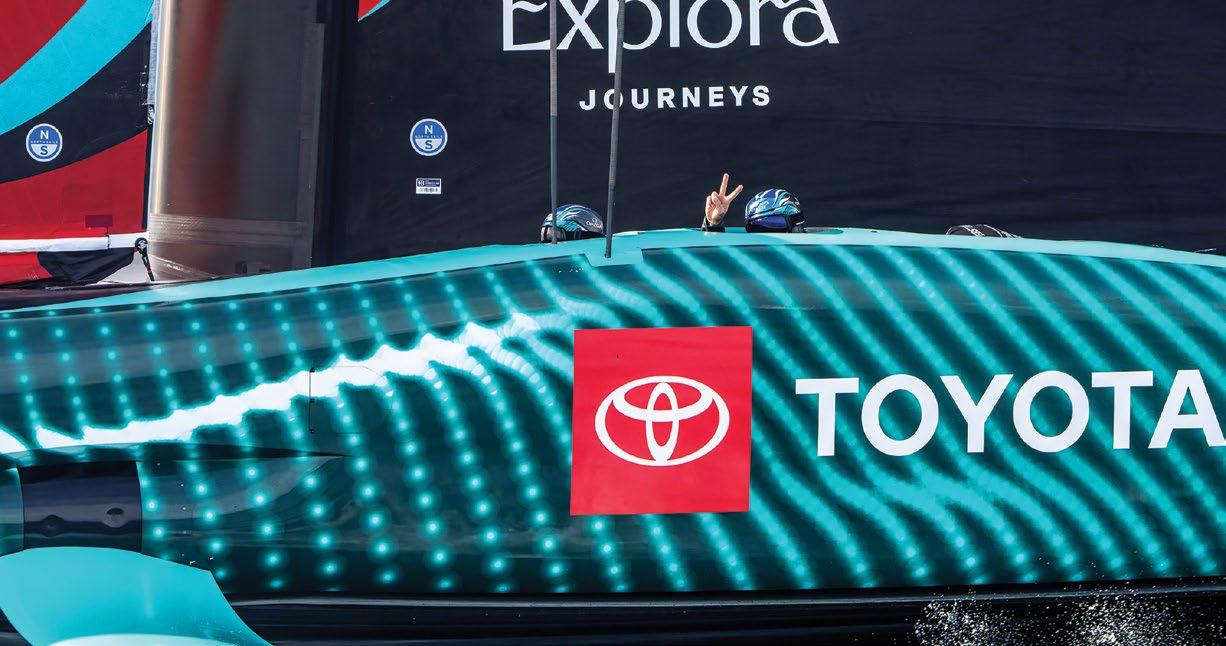





REGATTA EVENTS 2025
The Mahurangi Regatta an annual event held every Auckland Anniversary Weekend - this year on Saturday 25th January 2025.
Mahurangi Cruising Club conducts the sailing events on Mahurangi Harbour.

Mahurangi Cruising Club www.mahurangicruisingclub.org office@mahurangicruisingclub.org
REGATTA PRIZE-GIVING
Will be held at Scotts Landing from 1900 hours or as soon as results are confirmed.
Classic Yacht Assn. Takes entries for the Classic Launch Parade. admin@classicyacht.org.nz
NOTICE TO ALL REGATTA PARTICIPANTS:
Regatta start times have been bought forward and will now start at 1100hrs
FRIDAY 24 JANUARY 2025
Passage Races from Auckland to Mahurangi. (Devonport Yacht Club, CYA and other yacht clubs). Sandspit Yacht Club Perna Cup Mahurangi Weekend.
SATURDAY 25 January MAHURANGI REGATTA
0930 hours CYA Parade of Classic Launches from Scotts Landing to Sullivans Bay.
1100-1600 hours Mahurangi Regatta. Refer to the Notice of Regatta and Sailing Instructions.
1900 hours Prize-giving starts on the lawn adjacent to Scott Homestead at Scotts Landing. Some Barbecues will be provided.
SUNDAY 26 January
1030 hours CYA B Classic and Modern Passage Series race to Auckland.
1100 hours CYA A Classic and Modern Passage Series race to Auckland.
1800 hours Gather at the Kawau Boating Club, Bon Accord Harbour. All welcome.
Ponsonby Cruising Club race from Mahurangi to Bon Accord Harbour.
MONDAY 27 January AUCKLAND ANNIVERSARY DAY REGATTA
Auckland Anniversary Day Regatta with starts from Westhaven. Auckland Anniversary Day Regatta Passage races back to Auckland from Mahurangi and Kawau Island.
MAHURANGI REGATTA
The Regatta will be held in the classes and divisions outlined below. These races will be held in accordance with the International Regulations for Preventing Collisions at Sea.
Entries to the Regatta are made online.
For detailed information about participating in the Regatta, please refer to the Notice of Regatta and the Sailing Instructions obtainable from mahurangicruisingclub.org, or our facebook page.
MAHURANGI REGATTA DIVISIONS
TE HAUPA DIVISION
For traditional small boats under 20ft overall. This will include all traditional New Zealand classes like Zeddies, IA’s etc. Includes any other traditional style of boats such as sailing outriggers, proas, and sailing dories.
SAILING DINGHY DIVISION
Frostbite, Mistral, Zephyr, Sunburst & other centreboard classes.
A CLASS DIVISION
For yachts previously registered as A class yachts and other pre 1985 yachts over 12.2m (40ft) length on deck, unless an exemption is applied for and granted by the Regatta Committee. They sail for the A class Trophy and the Logan Trophy.
MAHURANGI DIVISION
For wooden boats pre 1955 design. Only for all-wooden construction. Includes Mullet Boats other than the L class.
L CLASS MULLET BOAT DIVISION
Traditional class of 22ft ballasted centreboard yachts.
TRADITIONAL SPIRIT DIVISION
For boats of any age, type, materials and construction that conform to the traditional spirit of a design pre-dating 1955 and is not eligible for the Mahurangi Cup. i.e., Is a modern design which is a close replica and built in the spirit of a traditional design but perhaps has more modern materials or construction. Includes H28 Class.
MID-CENTURY CLASSIC DIVISION (Modern Classics)
For yachts of any construction designed before 1985 and are longer than 6m (20ft) on deck and not eligible for the Mahurangi Cup or the Traditional Spirit Division. Includes Stewart 34 class, Reactor class.
REGATTA GENERAL INFORMATION
PLACE NAMES
On N.Z. Maritime charts, place names do not appear with their commonly used names. Sullivans Bay, where beach and dinghy races are held is marked Otarawao Bay. Scotts Landing where the prize-giving is held is not named on charts. It is situated between the wharf carpark at the end of Ridge Road and Casnell Island and is easily recognised by the Scott Homestead, the only building on the waterfront.
SCOTTS LANDING WHARF AND PONTOON

The wharf is only accessible by yachts at high tide. At low tide it almost dries out. Please use the wharf only for the transfer of people and supplies and not for docking. Ensure the working side of the pontoon is kept clear at all times especially when tying up dinghies to the wharf.
CLEARWAYS
There are clearways marked by buoys in Sullivans Bay for the Launch Parade and the shore activities. Be aware that your boat may swing into the clearways as the wind direction moves or on the change of tide.
PLEASE KEEP CLEAR AT ALL TIMES.
PARKING AT SCOTTS LANDING
Due to the very limited parking available at Scotts Landing and the narrow unsealed road towards the end, please use the signposted parking areas. Access must be kept clear for St John Ambulance and other emergency vehicles.
SANITATION
Some portaloo toilets are provided at Scotts Landing near the Scott Homestead. Please use your holding tank responsibly. Do not discharge boat sewage from vessels in the harbour. This is very important with the large influx of vessels in the harbour for the weekend. Mahurangi Harbour supports a large area of marine farming and we wish to keep the water quality high and also clean and safe for swimming. Please use rubbish bags where available, otherwise take your rubbish with you when you leave.
PRIZE-GIVING
Trophies and prizes will be presented as soon as the results have been decided about 1900 hours in the vicinity of Scott Homestead at Scotts Landing. The recipients can take photos with their trophies. Trophies must be returned to the trophy table before the end of the evening.
REGATTA COURSES
For information about the courses sailed in the Regatta, please consult the Sailing Instructions 2025. Also available at mahurangicruisingclub.org
TIDES FOR THE MAHURANGI HARBOUR
SATURDAY 25 JANUARY 2025 High Water 04:31 hrs 2.38m
Water 10:40 hrs 1.09m
Water 16:33 hrs 2.38m
Water 23:03 hrs 1.00m SUNDAY 26 JANUARY 2025

REGATTA 2024

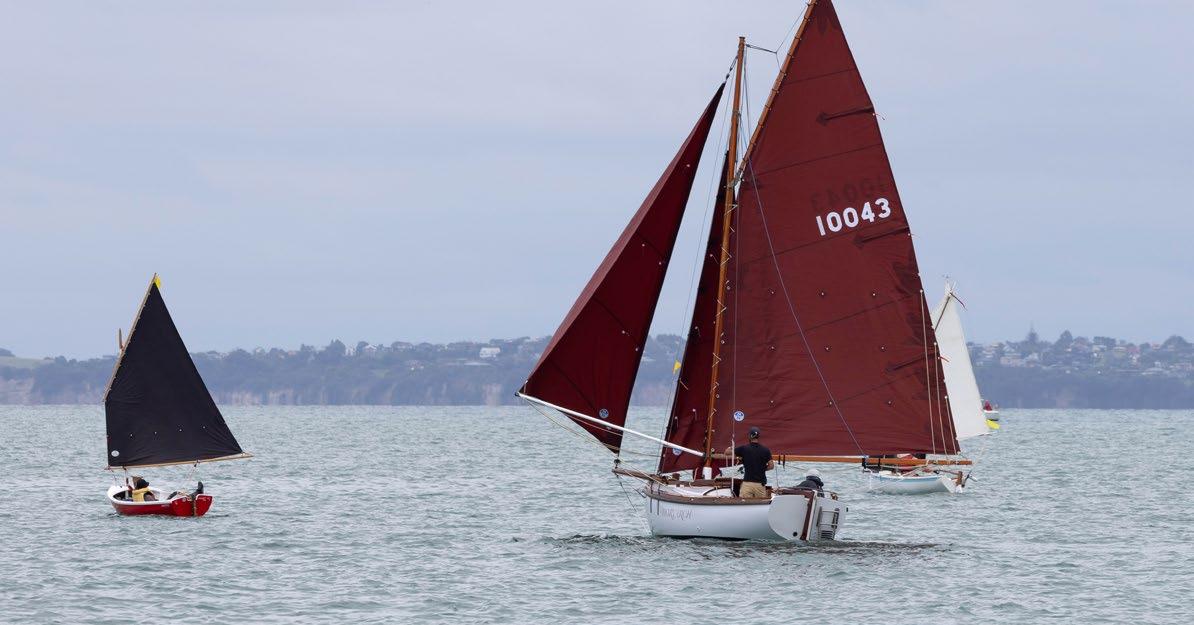
Janette, Morvarch, ROGER MILLS - HUMMINGBIRD
Orion II, ROGER MILLS - HUMMINGBIRD

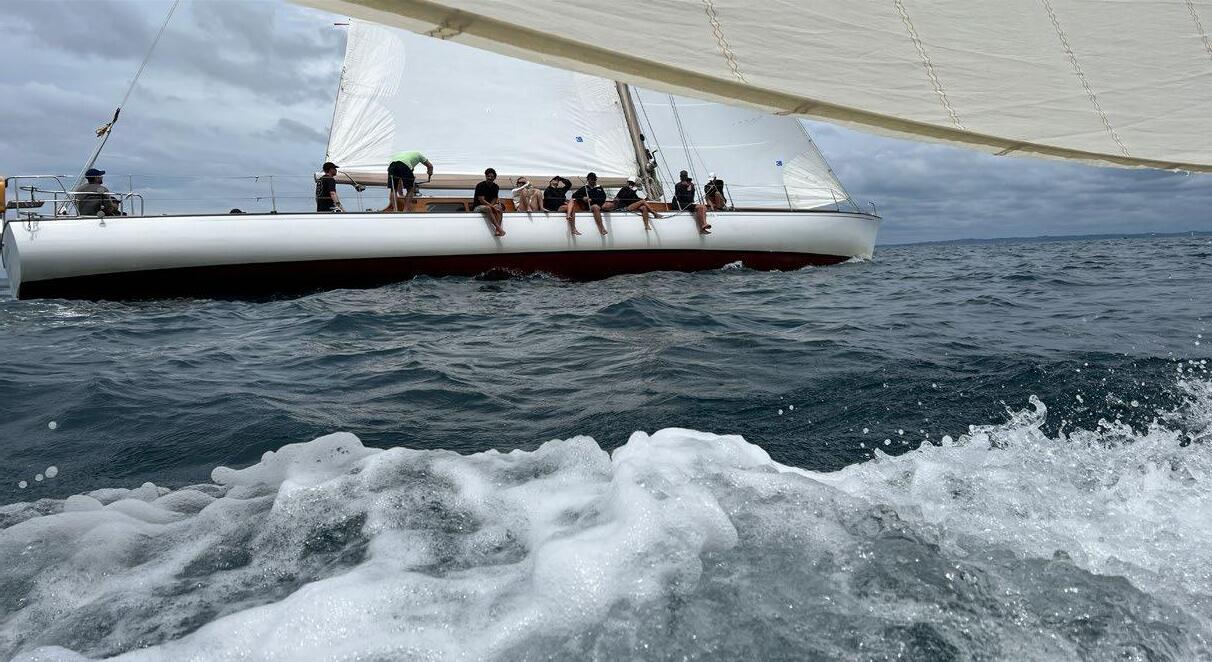
Classico - Frostbite ROGER MILLS - HUMMINGBIRD
InnIsmara A81 STEPHEN HORSLEY



Korora ROGER MILLS - HUMMINGBIRD
Destiny II
ROGER MILLS - HUMMINGBIRD
Rose ROGER MILLS - HUMMINGBIRD


Ida ROGER MILLS - HUMMINGBIRD
Kaikoura ROGER MILLS - HUMMINGBIRD


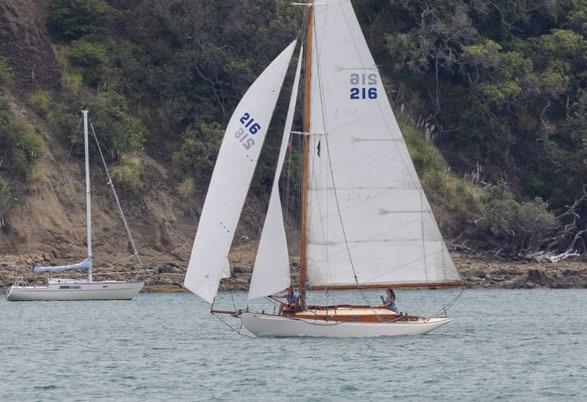
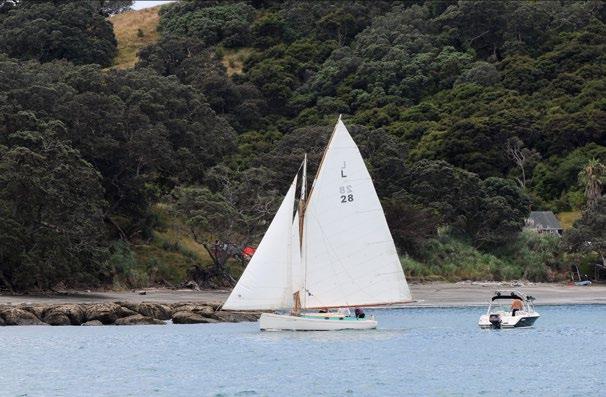

Mistress ROGER MILLS - HUMMINGBIRD
Kotuku ROGER MILLS - HUMMINGBIRD
Scott, Gloriana ROGER MILLS - HUMMINGBIRD
Melita ROGER MILLS - HUMMINGBIRD
Allons-y ROGER MILLS - HUMMINGBIRD





Karina ROGER MILLS - HUMMINGBIRD
Buccaneer
ROGER MILLS - HUMMINGBIRD
Lady Adelaide ROGER MILLS - HUMMINGBIRD
Kumi ROGER MILLS - HUMMINGBIRD
Launch Parade ROGER MILLS - HUMMINGBIRD
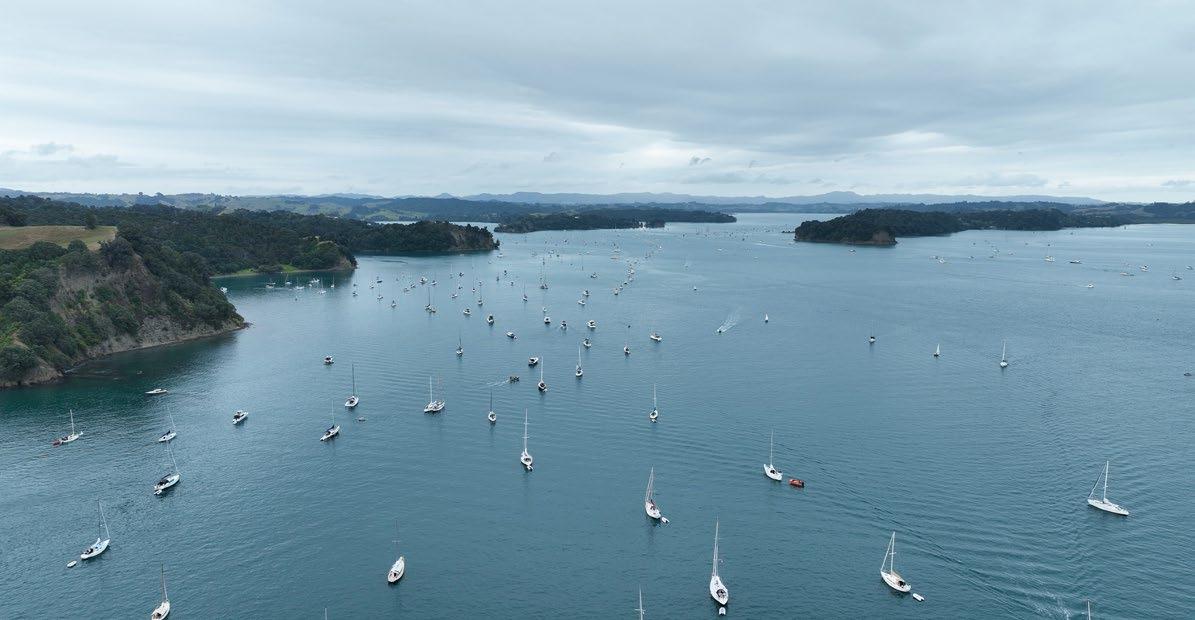

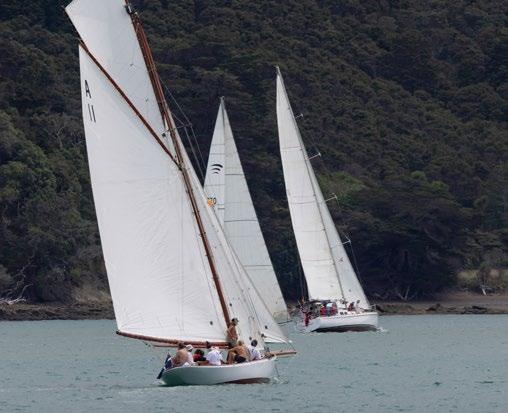

ROGER MILLS - HUMMINGBIRD
Jane Gifford and Rogue ROGER MILLS - HUMMINGBIRD
Orion II ROGER MILLS - HUMMINGBIRD
ROGER MILLS - HUMMINGBIRD


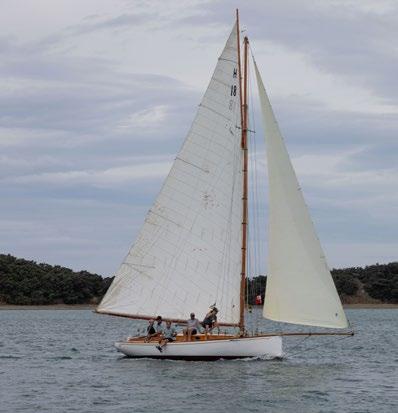



Ariki ROGER MILLS - HUMMINGBIRD
Talent 3116, Diamonds 5910
ROGER MILLS - HUMMINGBIRD
Carona ROGER MILLS - HUMMINGBIRD
Buona Sera ROGER MILLS - HUMMINGBIRD
Korora ROGER MILLS - HUMMINGBIRD
Nordic ROGER MILLS - HUMMINGBIRD





Nor West ROGER MILLS - HUMMINGBIRD
Launch Parade, Sullivans Bay ROGER MILLS - HUMMINGBIRD
Raindance STEPHEN HORSLEY
Coastal Rover ROGER MILLS - HUMMINGBIRD
Raiona ROGER MILLS - HUMMINGBIRD





Nereides ROGER MILLS - HUMMINGBIRD
Moana Lua ROGER MILLS - HUMMINGBIRD
Lucinda ROGER MILLS - HUMMINGBIRD
My Girl ROGER MILLS - HUMMINGBIRD
Ferro ROGER MILLS - HUMMINGBIRD


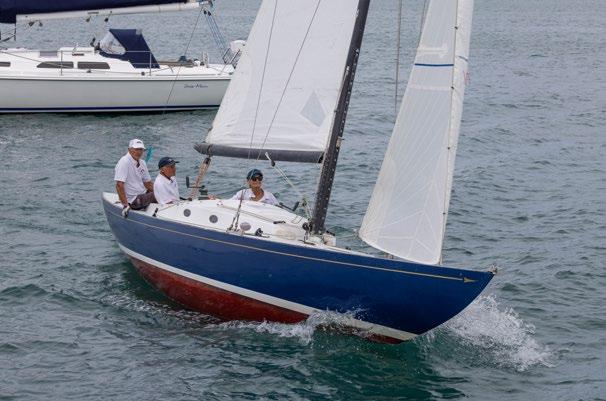
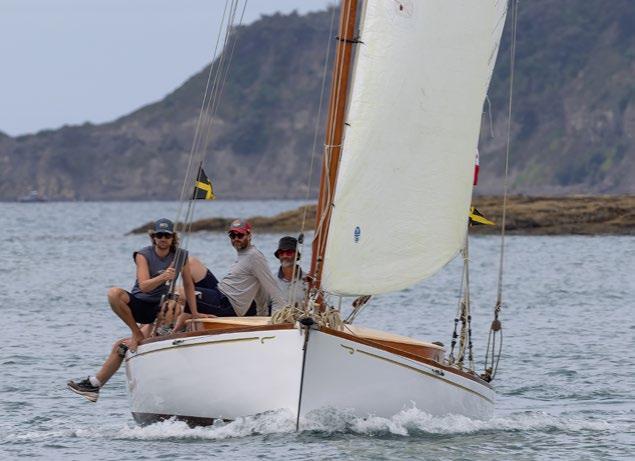

Carona ROGER MILLS - HUMMINGBIRD
Morvarch
ROGER MILLS - HUMMINGBIRD
Jane Gifford ROGER MILLS - HUMMINGBIRD
Princess ROGER MILLS - HUMMINGBIRD
RAWHITI STEPHEN HORSLEY





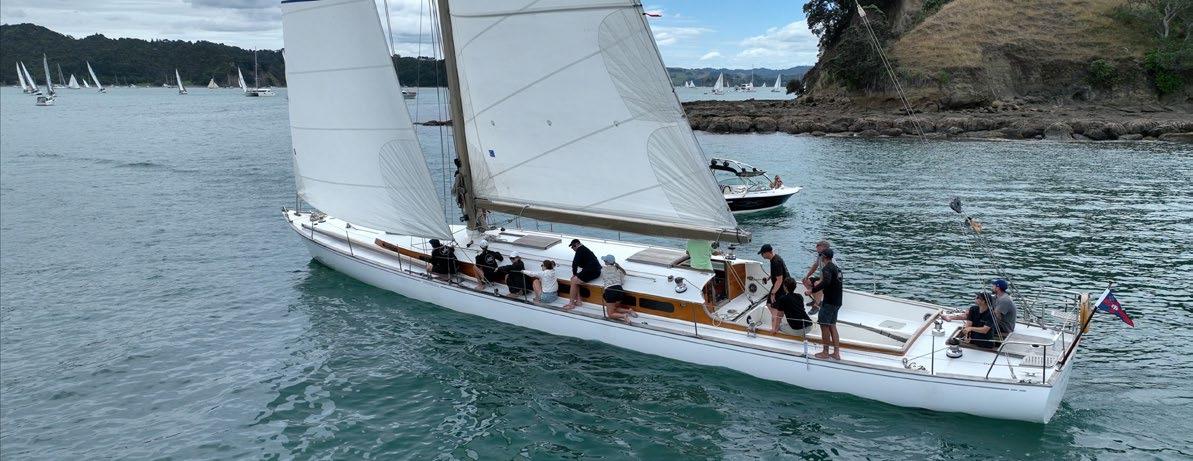
Innismara ROGER MILLS - HUMMINGBIRD
Strega ROGER MILLS - HUMMINGBIRD
Love ROGER MILLS - HUMMINGBIRD
Animal House
ROGER MILLS - HUMMINGBIRD
Lady Shirley ROGER MILLS - HUMMINGBIRD





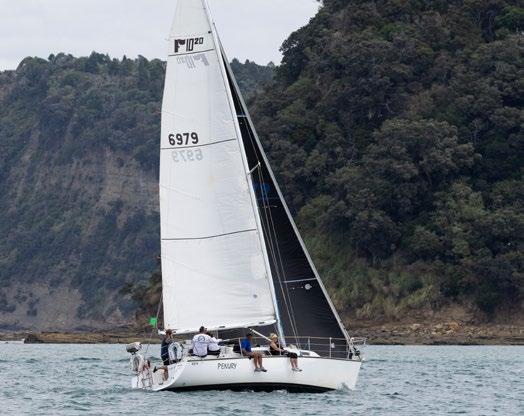
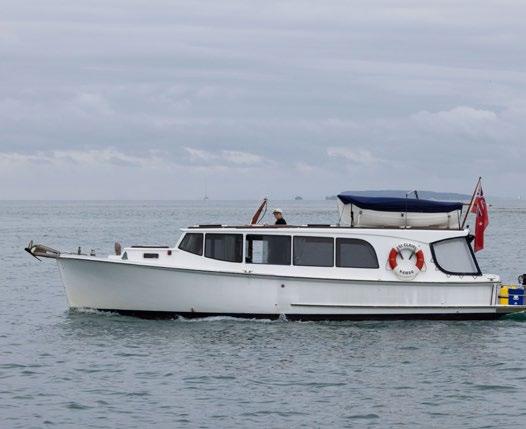


Gloriana, Kate, Frances, Gypsy, Princess ROGER MILLS - HUMMINGBIRD
Penury ROGER MILLS - HUMMINGBIRD
St Clair ROGER MILLS - HUMMINGBIRD
Vega ROGER MILLS - HUMMINGBIRD
Meola ROGER MILLS - HUMMINGBIRD
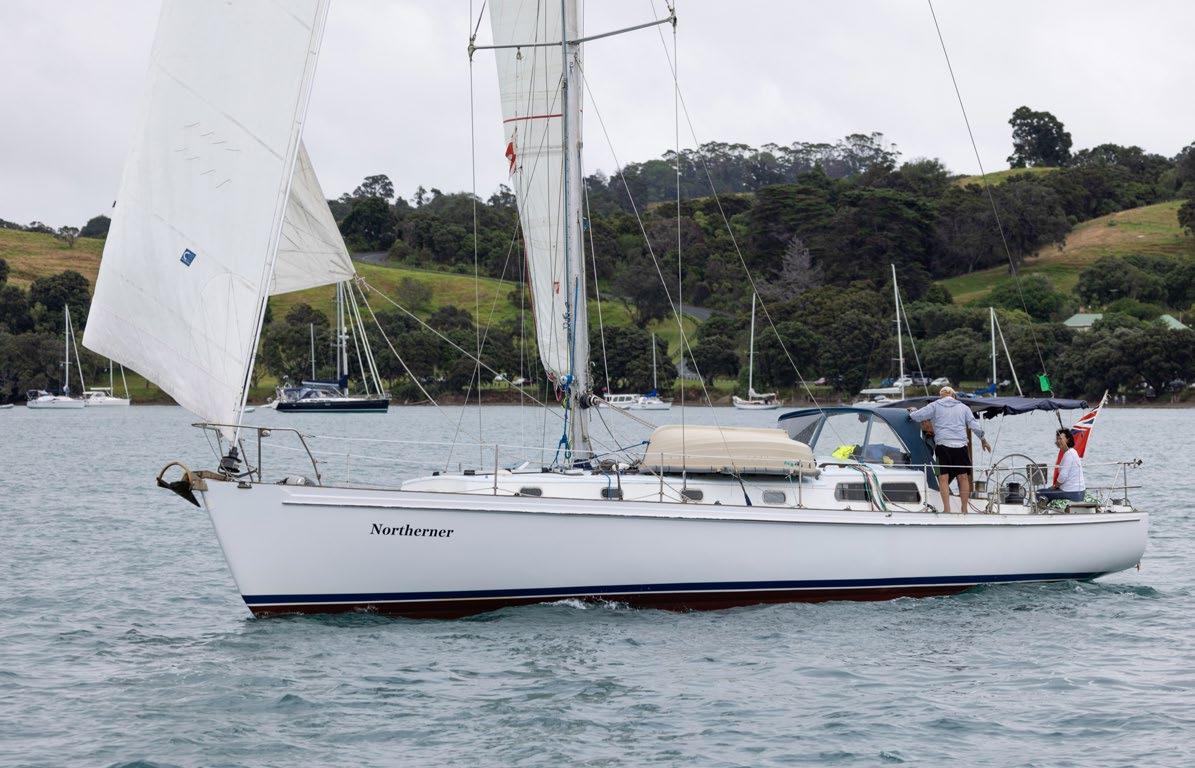




Rainbow ROGER MILLS - HUMMINGBIRD
Zarapito
ROGER MILLS - HUMMINGBIRD
Feather ROGER MILLS - HUMMINGBIRD
Ngaio ROGER MILLS - HUMMINGBIRD
ROGER MILLS - HUMMINGBIRD







Breeze ROGER MILLS - HUMMINGBIRD
Prize ROGER MILLS - HUMMINGBIRD
Flyaway, Shearwater II
ROGER MILLS - HUMMINGBIRD
Gypsy ROGER MILLS - HUMMINGBIRD Hannah ROGER MILLS - HUMMINGBIRD Komuri ROGER MILLS - HUMMINGBIRD Scout ROGER MILLS - HUMMINGBIRD
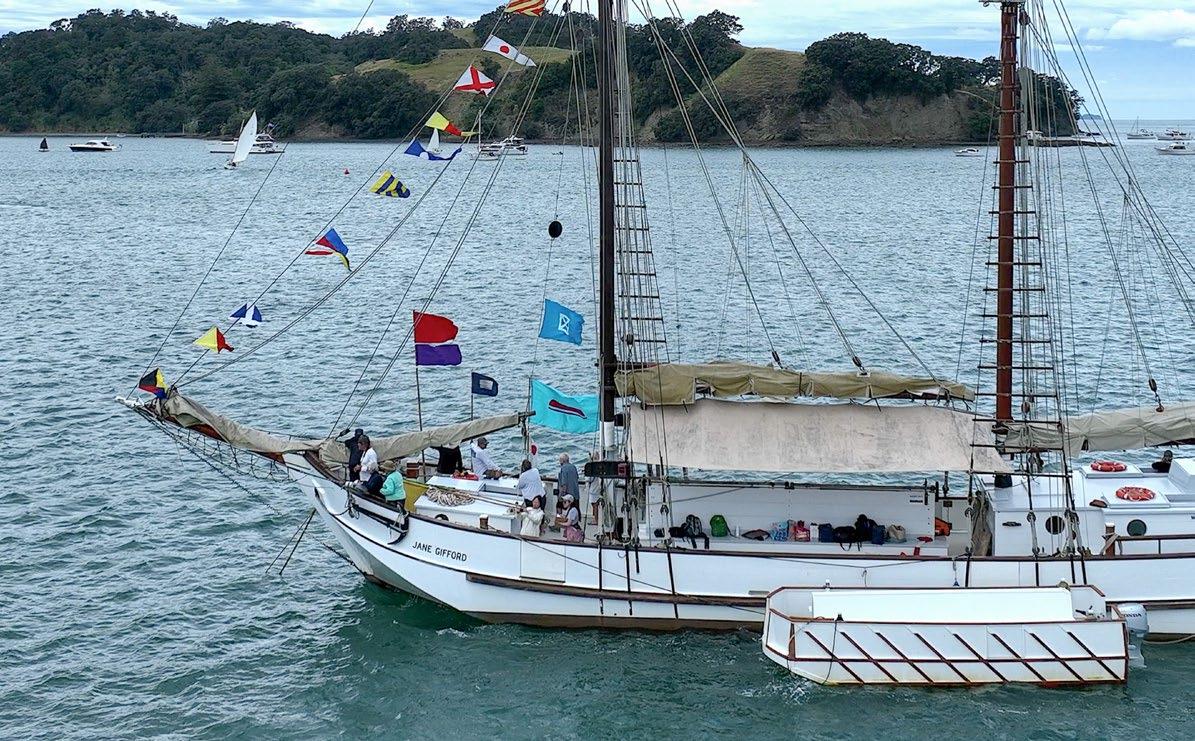




Jane Gifford ROGER MILLS - HUMMINGBIRD
Karina ROGER MILLS - HUMMINGBIRD
Launch Parade ROGER MILLS - HUMMINGBIRD
Eileen Patricia ROGER MILLS - HUMMINGBIRD
Surprise ROGER MILLS - HUMMINGBIRD





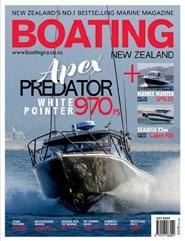


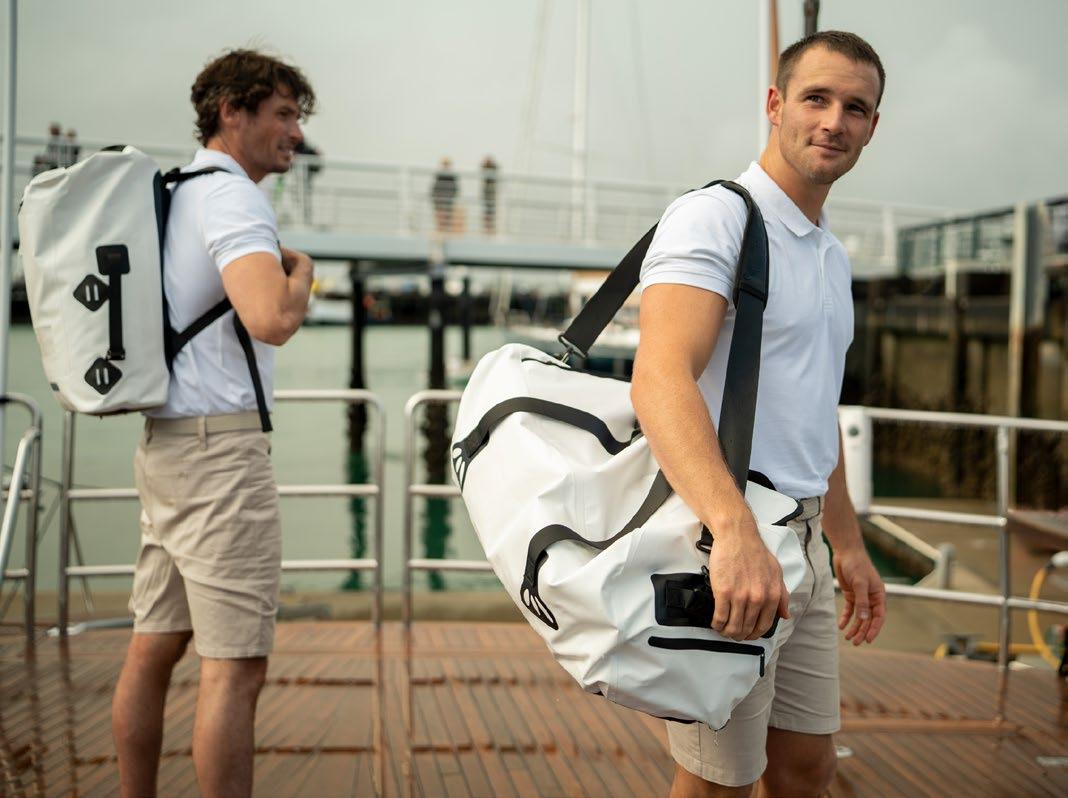






NICK ATKINSON Putting the rad in Trad
Bring back the Mahurangi lay day!
Iwas lucky enough recently, to become the proud owner of a vintage opinion. Indeed this particular point of view was long past its heyday. The fresh water and hard southern sunlight had weathered it until a change of the racing calendar had made it all but obsolete. But over the winter I tended this opinion, hoping to restore it to its former glory. I’d be lying if I said there weren't moments when I’d wanted to cut down its lofty scope. I even considered constructing a political abomination that would rise above its original sweeping sheerline. This winter however I’ve tried to keep it simple, sanding and shaping a minimum of new phrases and digging out the soft wood of other agendas. As Herreshoff once said: “Perfection is achieved not when there’s nothing left to add, but when there’s nothing left to take away”–or were those the words of Bruce Lee? Actually it was the pilot and writer Antoine de Saint-Exupery, but perhaps this entire argument needs a roundhouse kick to the bilges.

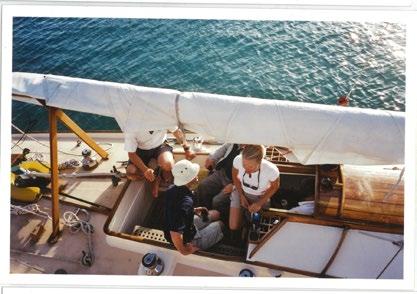

Launching a freshly refitted opinion into the boisterous seas of social media and gale-force comments /threads can be daunting. Before I grease up the slipway in readiness for this point of view I must haul tight on the first reef of public discourse; this is not personal in any way. If you sail, crew or merely gaze appreciatively upon an old boat you have my eternal and sincere goodwill. It's a precious community we share, but I’d be naive to think that the lines of this opinion won't offend the eyes of some local mariners.
Without further ado let us smash the champagne bottle on the bow of this opinion before we hoist and trim its sails, while appreciating its original craftsmanship and storied history.
Bring back the Mahurangi lay day!
I'm not trying to diminish the considerable legacy of the Anniversary Day races on the Waitemata. The epic fleets with crowds lining the shoreline are memories we’ll always treasure, but we're not anywhere near recreating that atmosphere and I dare say we never will again. That time has passed, which doesn’t make it any less wonderful or worth celebrating. For the last few years the classic fleet for the Anniversary Day harbour race has been no better or worse than many of the excellent traditional boat races laid on by the CYA and associated clubs. But that race comes at the cost of the Mahurangi lay day and our precious long weekend and while it may be difficult to pin down the price of losing that lay day I do want to try.
As we know the Mahurangi Regatta in its current form is by far the largest annual gathering of traditional boats in this country and you’d have to travel for quite some time to find an event that attracts more wooden boats and on-thewater spectators. I’m preaching to the choir talking about the time and effort that goes into campaigning a vessel at Mahurangi and it seems such a shame to break up the fleet so quickly and head for home when we’ve all got an extra day off. Isn’t that kinda mad?
The value of the lay day is priceless and this community has potentially deprived itself of so many connections and experiences while trying to follow the frowning pursuit of four consecutive days of racing. The one-two punch of the Friday night race followed by the Saturday Mahurangi



Regatta and party is not to be underestimated. A day off on Sunday makes sense on so many levels. The skippers, crew and support teams all need a chance to recover and this lay day is such a unique opportunity to explore the islands and meet other sailors.
They say we enjoy our leisure time less when it’s planned in great detail. That may not strictly apply to
classic yacht racing, but it’s certainly true of your average day off. We all know the feeling of dread as an intricate itinerary of travel and events looms up on the weekend horizon.
Anniversary Weekend can feel a bit like that too. There are so many people we only see at Mahurangi and we just want the chance to chew the fat with them, maybe plan some grand restoration and perhaps found a new boatyard. At least we could share a nice anchorage nearby and enjoy a swim. One of your budding crew might truly fall in love with old boats during the lay day, rather than be scared off forever at the relentlessness of the racing programme. I think we’ve lost the only day of the year when all the lovely old boats and their crews are all together with a little time on their hands. This is such a precious asset – a Sunday at a beautiful anchorage with endless legendary boats cast about like some epic lolly scramble of timber. Let us race home on Monday with a little more gas in the tank.
You know what they say about opinions, eh? I guess my conviction that Anniversary Weekend had a far more festive feel with the race back to Auckland scheduled for the Monday is pretty deep rooted. That was my first experience of Mahurangi in the early 2000s when as I skippered Tawera we won the Mahurangi Cup after a ding-dong battle with my boss at the time, Chad Thompson welded to the helm of Prize. The following Sunday I rowed around the crowded anchorage catching up on the gossip from the night before, cooked some eggs for the crew and read a couple of articles in the Yearbook. I don't know who suggested a sail to one of the nearby islands, but I do remember the passage felt effortless, with the crew now well-drilled after two demanding days racing.
We’ve given the current four-days-of-racing format a good run for several years now and the turnout for the Anniversary Day harbour course is, on balance a little less than the more popular CYA harbour races during the rest of the season. A number of the boats that do end up racing home on Sunday don't compete on Monday for the simple reason that they're completely spent. I think the Mahurangi Regatta and the values and atmosphere surrounding the event have helped pave the way for the growing enthusiasm for traditional boats. It’s also a unique chance to live aboard for a few nights with mulleties, A-class, Townsons and Woollacotts all bobbing around in close company. A day off on Sunday means we can improvise, we can jam. Even the bass player can take a solo before the band comes together to bring it on home on Monday with one last resounding chorus of sail headed south. Who would have the tireless sailor work on a Sunday?
Especially in this tidal paradise.
Growing up with the Fiery Cross and a canting keel.
A PERSONAL STORY BY Frank Young (son of Jim Young)
The swinging keel, known nowadays as a canting keel was a novel idea that attracted my father very much. He felt vindicated when canting keels were finally allowed in racing in recent years, but it took a long time. He had always been fascinated by new ideas in boats and always willing to try them right until his last days. He maintained that the fun you have while sailing is directly related to how fast you are sailing and being close to the water makes it better yet.
“Keep quiet, I am on the phone to America”. Wow, America! That was a big event in 1955. Book the call with the Post & Telegraph. Make sure the budget was sufficient to pay for the call. Be sure you had everything ready so not a minute was wasted on the limited and expensive call time allocated.
Why the big call? My father Jim Young was in regular correspondence with noted American designer L. Francis Herreshoff whose book The Commonsense of Yacht Design was a guiding reference for him as it has been for many other yacht designers. Earlier correspondence had convinced my father that Herreshoff’s ideas about a canting keel for a sailing yacht were worth a try. Herreshoff was more than happy to find somebody prepared to do it. Now the design of this 45ft-long boat was nearing completion and construction was about to start. Questions, doubts, reassurance? His belief that yacht design was too conservative and new ideas were actively discouraged was being put to the test. Time for an international phone call. A big event in those days. That is my earliest memory of the Fiery Cross.

My mother Margaret Paterson was a successful yachtie in her own right, rising to national prominence in the Silver Fern class in the late 1940s when competitive female sailors were unheard of. The daughter of a yachting family with family history going back to the first settlement of Great Barrier Island in the 1870s she married a nearpenniless boatbuilder, and successful yachtie, Jim Young.
The area of Willow Bay, Birkenhead, the sheltered western corner of Little Shoal Bay near Needles Eye (Upper Waitemata Harbour) had been owned by the Taylor family, who are cousins. The Lady Stirling was built and owned by the Taylor family and was kept on the slipway in Willow Bay. The skipper of Lady Stirling was my grandfather Arnold Paterson. So this corner of Willow Bay was a good spot for boatbuilding, complete with a slipway, and a family history. My father managed to acquire the property and that is where he started his boatbuilding business.




My mother always wanted a boat for cruising in the Hauraki Gulf. My father went into boatbuilding because he wanted to be a yacht designer and he soon saw that the only way to get your designs built was to build them yourself. So the objectives were somewhat aligned - the design vision perhaps not so much. The design that became the Fiery Cross was not quite what my mother had in mind. Her preference, with my grandfather’s backing, was for a slightly bigger version of the recently built Tango being about as advanced as could be considered reasonable. There is that yachting conservatism again which my father battled with throughout his career. Something as different and ahead of its time as the Fiery Cross was certainly stretching things.
Fast forward a couple of years. The Fiery Cross is a mostly planked upside down hull, (yet another innovation at the time) on one side of the boat shed in Willow Bay. Dad is building her in his “spare time”. His words, not mine. At the same time he, with two or three employees,
is building other boats for customers in the same shed to try to keep food on the table and finance the Fiery Cross. Launches such as Gazelle, Moehau, Lady Claire, Tide Ryder, Ngarunui, and the motor sailer Vermona were some built alongside Fiery Cross. Also a few catamarans. The shed was less than 40 feet long and about 25 feet wide. It was useful that Fiery Cross had only 7ft 2in beam which left enough room in the shed to build other boats, even if her stern stuck out of the shed by about 10 feet and was covered by a tarpaulin.
Spare time boatbuilding and lack of money too, meant that progress was slow. She was constructed with dressed heart kauri diagonally planked over longitudinal stringers, glued with Aerodux Resorcinol glue, and nailed with copper nails. Most work was in the evenings and weekends, often with a bit of help from friends and relatives, my uncle, Alan Young, helping after school with the dolly underneath to clinch the copper nails dripping with Aerodux glue. I was also pressed into work on the
PREVIOUS SPREAD: Surfing past Tapeka Point, Bay of Islands 1964. TOP: Turning over the planked hull in the shed. The canting keel nacelle is clearly visible. ABOVE LEFT & RIGHT: The hull completed, ready for deck and cabin



dolly, especially in the narrow spaces at the bow and stern because I was still young and small enough to squeeze into the tight spaces. I was also required to climb into the small spaces under the cockpit and in the bow and stern to apply the red lead primer.
Slowly the dream was becoming a reality. Fiery Cross was taking shape and attracting sceptical comments. All glued construction? “Never been done in New Zealand before. Won’t last 10 years.” Separate spade rudder? “No use in a sea. You’ll never control the boat. It’ll fall off Tango’s hadn’t yet but it will soon. Just lucky so far.” And a swinging keel? “That is just to cheat in racing. It will never work and it will fall off soon too. Who would ever build a boat like that? I wouldn’t go past North Head in that.” A deck stepped mast? “That will never stand up. The cabin top won’t take it. It's dangerous.” Yeah well, press on regardless. Innovators are not always well understood.
The keel inevitably became a big part of the Fiery Cross
story. First was the lead ballast. One-and-a-half tons of lead had to be acquired by a broke boatbuilder. Some was accumulated by scrounging around building sites and scrap merchants for old lead waste pipes, batteries, and similar. But the main source of the lead was a story on its own.
My grandfather, Arnold Paterson, lived on his 28ft launch Wild Thyme mostly on a mooring in Shoal Bay, Tryphena on Great Barrier.
An old 30ft yacht had ended up wrecked or abandoned on the mud further up Shoal Bay. After being alerted by my grandfather Dad bought the wreck from the insurance company with the idea of salvaging various parts, some of which may be useful on Fiery Cross. The main objective was the lead keel. Just as well he wasn’t relying on anything else because by the time he got to the wreck the only thing left was the lead.
The Barrier locals had helped themselves to anything else of value that could be moved or removed, including the Villiers engine which was soon seen powering a local
TOP: Melting the lead. ABOVE LEFT: Launching day – a good group of helping hands push high tide. RIGHT: Stepping the mast.


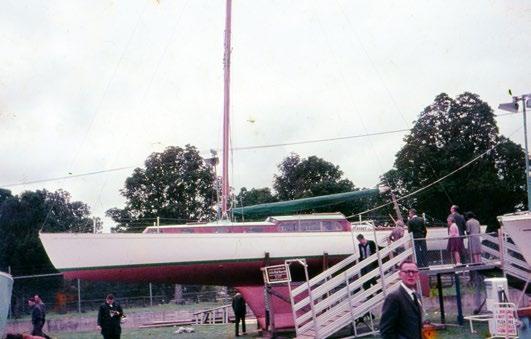
trailer contraption, which became something of an icon itself.
The 1959 Easter holidays find the family at Shoal Bay staying in Otways' guest cabin quite close to the remains of the wrecked yacht. High tide meant playing on the beach and swimming. As kids, my sisters Adrienne and Wendy and I were always exposed to boats as you might guess. Wendy was a little young at that stage but my model at that time was a small ship which Dad used to teach me about the characteristics of wave formation by boat hulls, towing it on a stick along the beach. Adrienne’s toy for the beach was a skinny double-ended model made from a piece of kauri. It was called Mummy’s Boat. It was in fact a model of the Fiery Cross and I think was a bit of a selling job by Dad on Mum and the family.
Low tide saw Dad working feverishly to unbolt the lead from the wrecked hull and cut it up into small enough pieces so they could be lifted for transport back to Auckland. A chainsaw was the tool of choice. Not very efficient but effective. Lead is not easy to cut especially lying in mud. After a full two weeks work the lead is ready to transfer to Auckland, along with some night watch work to ensure the now-movable pieces of lead did not go the way of the rest of the wreck’s valuables, although we suspected some did.
Barely able to be lifted by one or two men, the lead lumps are transferred into a 15ft flat-bottom punt that Dad had built as a workboat for the Little Shoal Bay boatshed. This had been towed out to Great Barrier behind Wild Thyme. The lead, total weight perhaps about one ton was loaded onto Wild Thyme with some remaining in the punt, and back to Little Shoal Bay in Auckland we go where the Fiery Cross is nearing
completion, waiting for a keel.
The kiwi do-it-yourself tradition was alive and well in Birkenhead which, before the Harbour Bridge, was a fairly small community where most residents knew each other and helped out. That coupled with financial necessity meant that the lead ballast was to be cast in the yard next to the Fiery Cross. A further advantage was that the hollow mild steel fin could be attached to the lead right where it was cast, the hull then lifted and dropped on, the pins inserted in the canting hinges in the hull keelson, and the keel is attached. The keel assembly consisted of a hollow fin fabricated from 6mm-thick welded mild steel. In the central part at the bottom of the fin is a channel in which a 30 degree angled stainless steel shaft keys in on a square swivelled shoe that slides in the channel. When the shaft is rotated 90 degrees the effect is to angle the hinged keel by 30 degrees. The lead was a simple bulb on the bottom of the fin–not the kind of bulb commonly seen today but an early version, advanced for its time. The mould was built of plywood, reinforced externally with timber, lined and shaped internally with concrete that had been been carefully heated and dried, meant to withstand the molten lead and allow it to be cast and cooled safely.
The big day for the keel casting arrives. There are several yachties and Birkenhead locals there as volunteer labour and “advisors”. Several sacks of coal and coke have been brought over from the Northcote gasworks on the other side of Little Shoal Bay. The mould is ready. Two large cast iron vats have been obtained and set up on bricks and the fires are going, the lead slowly melts, the beer flows, food is served, and everybody is having a great time. Health and safety? Bare feet was the common footwear. Some had gumboots.
ABOVE: Fiery Cross first sail with a spinnaker, with bamboo spinnaker pole 1959. ABOVE TWO: Lifted at Auckland port for transport to 1962 Boat Show. OPPOSITE: Birkenhead wharf and boat shed 1961.

The molten lead starts to pour out of the pipes into the mould but only after some coaxing with gas torches after it solidified in the cold feed pipes. The mould is filling and the pour is looking good until it is about 75 percent full. Then part of the mould breaks. Hot molten lead is pouring over the ground. Remember those bare feet? Some quick stepping needed but no damage done. Frantic efforts follow to get bricks and pieces of wood to shore up the leaking portion of the mould and avoid a complete disaster. Lots of expert opinions. The pour is stopped while that is done. Still-molten lead is shovelled back into the melting pots or separated into small puddles that can be handled as they cool. Finally things are repaired sufficiently that it is decided to continue.
All this is highly entertaining to me as an eight-year-old spectator being kept a respectable distance away sitting on a stack of timber with instructions to stay there or else! The fires are stoked up again and finally the pour resumes into the evening. Fortunately with no further mishaps.
When the lead finally cools three days later and the mould is removed, two things are apparent. There is an obvious line between the first pour and the second pour and the lead has a large bulge on one side where the mould had sagged and given way. The visible line was determined to be of little consequence and was later filled. However the bulge required removal to fair the lead into the proper shape. A very painful process for some weeks with planes and chisels, the result being that some lead was lost and the keel ended up slightly lighter than intended. A few calculations and it was decided that the lighter keel was not a problem, and so it turned out.
A 2in-thick kauri spacer was added to the top of the lead between the lead and the fin. The righting moment was restored or perhaps improved and all was good.
As Christmas 1959 approaches, Fiery Cross is to be launched and sailing for the Christmas cruise. If not
then the remaining support from my mother might have entirely evaporated. The keel is attached. The boat is painted with a new innovative high tech paint called “Vinylon”. She looks a treat in dark red. The spruce mast is stepped and she is launched on the December spring tide. Wild Thyme assisted to tow her from the cradle, and then a line was attached part-way up the mast, to heel her over enough to float out over the shallow water. Even that was a risky affair as the spring tide was starting to ebb before Fiery Cross was coaxed to move. The keel had its first test although not yet a canting test.
Within a couple of weeks we load up, nothing stowed, and off we go for our first Christmas cruise. Kawau is the first stop. Our arrival in Mansion House Bay on the first evening of the first cruise was greeted by the booming voice of Boy Belvie, owner of Ladybird at the time, “has that boat got as much room inside as it does outside?” A valid question as she was 45ft long and 7ft 2in beam on a double-ended hull. A long and narrow canoe and the interior accommodation was indeed more like that of a 35 footer than a 45 footer.
Then a run to Port Fitzroy in a fresh south westerly, finally anchoring in Smokehouse Bay where Wild Thyme awaits us with my grandfather keen to see that we made it.
Three weeks of cruising at Great Barrier follows. Then by mid-January, not long after returning to Auckland, it becomes apparent that something is not right with the red paint. It is developing big grey patches and looking terrible. This was drawing many questions and comments. Discussions with the supplier did little to establish the cause and I don’t know if it was ever resolved. However by May 1960, Fiery Cross is hauled out at Needles Eye Little Shoal Bay (there was still an eye there then) and the now red/grey blotchy Vinylon is removed. Easier said than done. That stuff was some kind of plastic. It was impossible to sand. Removal was only possible by
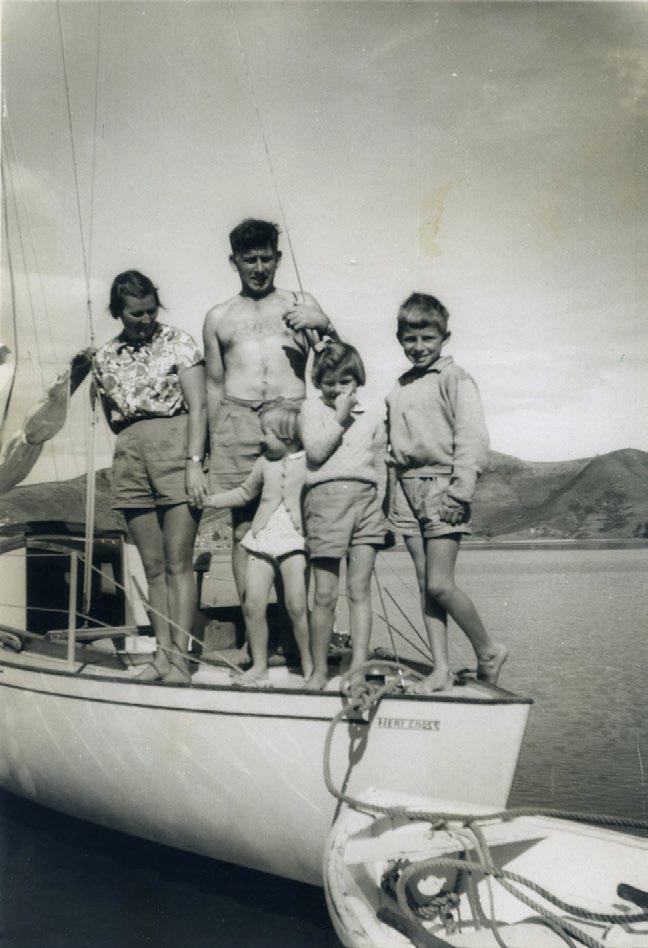
burning it off with a blowlamp and scraper and sanding afterwards. A laborious job that lasted much of the 1960 winter. Fiery Cross acquired her white topsides with normal paint after that.
The canting keel attracted much attention. The first was from the New Zealand Yachting Association who required that if Fiery Cross was to participate in any races in New Zealand an undertaking must be signed that the keel will be locked at all times and not moved in any way. Without that Fiery Cross would not be permitted to take part in any racing. With the necessary papers signed, her first race was the 1960 Auckland Anniversary Regatta. No canting keel. No sheet winches. No engine. Heavy cotton sails and a borrowed spinnaker with spinnaker pole fashioned from a large bamboo that grew near the boatshed in Willow Bay. The race was not a great success as we were not really set up for it but our position among finishers ended when we nudged Moana lightly on the stern while rounding Motuihe Black buoy. We thought we had done well to keep up with Moana on our first race. However we were informed by Alf Miller, owner/skipper of Moana that “you’re out, I’m afraid”. The Corinthian yachting attitude in those days was to then withdraw and go home,


OPPOSITE: Collecting water at Governors Pass, Great
but Dad would not let that stop the day’s fun so we sailed to the finish in a respectable position but did not record a result. So went Fiery Cross’s first race. Memorable but not entirely satisfactory.
Then came the efforts to make the canting keel work. Finances had not improved, not helped by the paint debacle. Dad's Vindex launch design was starting to look like a money-maker but not yet. He obtained two hydraulic rams of a type typically used in front end loaders. They were painted a nice light green, suitably adapted, and installed in the bilge on a steel mounting plate that had been built into the bottom of the boat for the purpose and to secure the keel hinge bolts to.
These rams had a heavy chain attached to each. The chain went around a 700mm diameter wheel. This chain wheel was part of a hollow steel shaft assembly of 100mm diameter which was secured at its top end in the cabin top by a bearing in a steel frame and passed through a watertight gland in the steel keel plate and kauri keelson to the 30 degree canting shaft inside the keel. When one ram pulled the chain the shaft would turn and the keel would cant outwards. The opposite ram would pull it back and out the other way.
LEFT: Jim Young and family, Christmas 1960. ABOVE TWO: Jim and family often cruised together with Des Townson when Des built Serene. Picture at Port Fitzroy c 1963. Fiery Cross in her first race Auckland Anniversary Day, January 1960.
Barrier Island.

This was accomplished by a hand pump and a control valve under the cockpit seat. And it worked … sort of. What went wrong? The problem was the hydraulic rams, they leaked – a lot. This meant that air got into the hydraulic system and it was inoperative without frequent system bleeding – like every time the rams were used. The pump would have no effect if any air was in the system. The keel could be pumped to windward if the system was bled, and then would slowly fall back as the system leaked.
Hydraulic fluid is an effective paint stripper. It leaked into the bilges and stripped all the paint from the bilges, up under the bunks, and in the galley too as it made its way everywhere along the stringers as the boat heeled. All a bit of a disaster and no money to buy new better hydraulic rams.
Not to mention more or less the final straw for my mother who just wanted to go sailing and the money had run out. So finally Mum won out. No more money was spent on the hydraulic system and the canting keel continued, unused. The rams were removed along with the hydraulic gear and the bilges were repainted.
However Dad did not give up completely on the canting keel. How about just unpinning the keel and letting it fall to leeward then pin it and tack? Away you go with the keel out to windward. Initial reactions were: What happens if you let the keel loose and it goes 30 degrees to leeward and the boat lays over so far that it cannot recover or you lose control or sink because of water pouring through the cabin windows and the cockpit or ….?
Dad did some calculations and concluded there was no real risk of anything serious happening – although not
completely confident as I recall. So on a nice moderate south westerly day in the summer of 1963 we are on the harbour near Northern Leading Beacon, with Des Townson aboard too. Dad and Des spent a lot of time together in the early 1960s. The decision is made to give it a go. Fiery Cross is luffed up. When upright with no pressure on the keel shaft, the locking pin is removed from the chain wheel which is all that remains of the hydraulic canting mechanism, and then we head off on port tack towards Takapuna. She lays over … quite a long way. The leeward rail is under water but that is as far as she goes. I was there watching with some trepidation, being told by my father that there is nothing to worry about. The keel is pinned in the fully canted position. Then we gybe (not tack for reasons we see later) and head for Browns Island. Off we go, sitting nearly upright and belting along at a good 11 or 12 knots. Relief all round and a bit of “I told you so”, that turned to excitement as the extra performance became apparent.
Call that proof of concept if you like. Not quite the system as originally intended but it made the canting keel a useable and useful attribute. The unpin/lay over/pin and tack method was used on many occasions when we had a good reaching passage, the most memorable being a trip from Auckland to the Bay of Islands in a fresh south westerly. We averaged over 12 knots from Rangitoto Beacon to Cape Brett. Maybe not that impressive these days but quite something in the early 1960s.
How was she to sail with the keel canted? First of all – wet. The long narrow hull was designed to sit fairly upright with the keel canted, be easily driven and slice along on a reach, just as we were doing. That worked very



well but the narrow hull and the added power of the canted keel meant she just sliced through waves and plenty came along the deck.
The loss of lateral resistance with the keel canted meant that at lower speeds there was a lot of lee helm. Similar to a centreboard dinghy with the centreboard up. Upwind sailing was not a big success with the canted keel and tacking with the keel canted was quite difficult. This is why modern canting keelers also have daggerboards but that idea was well in the future. This shows how much was really unknown at the time. The canting keel on Fiery Cross can be considered a qualified success, given the knowledge at the time. Much has been learned about canting keels since, but that knowledge had to start somewhere. A lot of it started with Fiery Cross
The swinging/canting keel was a central part of the Fiery Cross story for some years in several ways. The mild steel fin was a constant maintenance problem. It had not been grit blasted and suitably primed at the beginning, partly due to no money being available, so was constantly showing rust stains and bubbles. The job of sandblasting and priming was finally done on the grid at Westhaven in 1964 which helped a lot. The keel had 3 chambers. The chambers at the front and back were supposedly airtight and dry although that was doubtful as water would trickle out for days after she was hauled out. The central chamber had a removable door on one side for access to the canting shaft, hull gland, and sliding shoe at the bottom. That chamber was always full of water and was a rusty, dirty, maintenance job every time the boat was antifouled. The rusting of the fin looked bad. Electrolysis caused some perceived problems too. It all gave rise to concerns about the long term strength and durability of the fin. Would it fall off one day? These fears were much overstated as it turned out.
The solid lead bulb ballast on the keel was about 600mm wide on its base with a fairly flat bottom at the widest third of its length. It was a hydrodynamic shape and tapered away towards the aft end. The low centre of gravity and the flat bottom section of the keel caused some consternation one night. Christmas 1964 we were anchored in Mercury Cove. A peaceful night with a light easterly wind. About 2 a.m. there is a loud crash, a splash and the sound of water. The boat is now lying over
TOP: Jim in his favorite position. MIDDLE: A typical view forward.
Note the canting keel shaft in the cabin. BOTTOM: Fiery Cross in her revised paint scheme 1961

at about 20 degrees heel. Mum has catapulted across the cabin from her bunk onto Dad. I have fallen out of my bunk. My sisters are OK as they are in the quarter-berths.
Dad gets up in the dark and steps right into water –horrified (you can guess at the commentary) he switches on a cabin light. There we are, heeled as if we are sailing hard pressed. All is quiet except for a tadpole swimming in the water on the floor. It is not immediately clear what has happened in the dark and now quiet night, but the story slowly unfolds. There was a small localized tsunami in progress causing a rise and fall of the tide of about one metre or more at about 30 minute intervals. The tide had receded, and Fiery Cross had sat neatly down on the keel, staying perfectly upright on this calm night as the water level dropped probably to a level that left much of the hull clear of the water.
A slight puff of wind was enough to push her over and over we did go with a big splash. Soon the water came back in and we were upright and afloat again with the anchor straining to hold us against the current. Throughout the rest of the night and much of the next day the cycles of rising and falling tidal surges continued. We moved to a deeper anchorage and safely watched the phenomenon continue. And the water in the bilge? That was a tadpole in a jar of water on the sink bench that my sisters and I were keeping after finding it in a pond ashore! Father was not impressed.
Fiery Cross was used a lot as a family cruiser right from when she was launched. We would go away most Friday nights for the weekend during my schooldays. She had no auxiliary engine for her first two years, again mainly due to money. That meant arriving at school late on a few Monday mornings with a note from Mum explaining that we were becalmed getting home. I think my teachers came to expect it.
The one-and-a-half horsepower British Seagull mounted on the Young 2.8 dinghy tied alongside was good for about three knots but that meant slow progress against an outgoing tide off Devonport. A somewhat marinized Ford 10 petrol engine was installed in the winter of 1962, with
a folding prop and no gearbox – just a clutch. That meant no reverse gear which made for some interesting moments especially when berthing. She is a very easily driven hull being so narrow, 7ft 2in beam, 45ft length and only fourand-a-half tons displacement. The Ford 10 could easily push her along at eight-and-a-half knots and she would carry her way some distance. She was not easy to stop and there were occasional robust arrivals alongside piers or sudden stops in unexpected shallow water.
We cruised frequently in company with Des Townson after he built Serene. Des and Dad were good friends in the early 1960s. We first cruised with Des when he owned Storm a 25ft Woollacott which he sold and then built Serene. We cruised on many occasions together with Serene with Alan Young sometimes joining in his catamaran Vitesse.
Des designed the 11ft Dart in 1962. Dad liked the design. It was essentially a hard chine Mistral and Dad built the first three, one of which became mine. It was an early introduction to marketing. My Dart was given number 12. I asked why not number one? I was told that number 12 would make people think there were more around so the boat would be seen as a popular choice. The Dart was part of the entourage often towed by Fiery Cross when we were cruising, along with two Young 2.8 dinghies. It was a great little two-child or adult-and-child boat, fun to sail and easy to build. A shame that the Dart class never managed to achieve the popularity of the Mistral or some other two-man classes.
From a close association, Des and Dad diverged somewhat in the mid 1960s as Des became attracted to the Sparkman and Stevens design style. Dad had a poor opinion of Sparkman and Stevens designs.
On our Christmas cruise in 1966/67 we were in Taemaro Bay between Whangaroa and Doubtless Bay, anchored and having lunch. The usual crowd of seagulls was hanging around looking for scraps. We noticed one not flying and on closer inspection saw that it was dragging its left wing in the water.
Dad always had a love of birds, seeing in them the
Ngarunui and Fiery Cross Port Fitzroy wharf 1962.
unity with nature that he also saw in sailing yachts so we hopped in the dinghy and soon caught up with this obviously crippled seagull. It had been shot through the inner wing joint and the wing was dead, hanging on only by a shred of living skin. We took it aboard, even though it had plenty of fight, biting and scratching as seagulls can. The wing was cut off with scissors and the remaining stump was dressed and bandaged. It was left in the cockpit to recover along with some fish or crayfish which it made short work of. We thought it would not survive the trauma but after a few days it grew stronger and was soon on the aft deck, defending its new territory against all comers.
The seagull became a family pet, cruising with us on Fiery Cross, and later Notre Dame and living by the goldfish pond at home in Narrowneck when not on the boat. It spent the night on the floor of the forward cabin next to my bunk on Fiery Cross. A point that anchored an article in the Northern Advocate two years later, about the seagull “staying in the cabin with the son of the family, Frank”. It spent the night in my parents’ shower when at home and became sufficiently tame that it would quite readily walk indoors with minimal encouragement. When away cruising on Fiery Cross it would defend that long aft deck but in the excitement it would often fall over the side when it forgot it could not fly. It would then swim ashore where we would leave it for hours until we went ashore to catch it and put it back in the cockpit while sailing or in the forward cabin for the night.
The pet seagull became quite famous around the Gulf as an addition to Fiery Cross. It lasted seven years as a pet. It had the measure of all the local cats but a hawk finally took it one day in the yard at Narrowneck.
My mother grew to love Fiery Cross – a very easily handled boat, a very capable passage-maker, enjoyable to sail, and economical to own. In many ways she is a 35 footer with the performance of a 45 footer. All of which appealed to Mum, but perhaps the family time spent cruising the Hauraki Gulf was the main thing that Fiery Cross gave her and that she treasured to her last day.
While I have used the name Fiery Cross throughout this story, as with so many boats the name was only decided weeks from launching when final painting was in progress. Until then it was just “the boat”. There has been some speculation about the origin of the name. It is a simple story but is an insight into my father’s character and interests. Perhaps also some of his motivation in boat design.
My father had a deep interest and fascination with sailing ships and all their history and tradition. Some who knew him may particularly remember his enjoyment of sailors’ sea shanties. He spent many hours telling me about sailing ships and their rigs, the names of the different sails, and some of the famous sailing ship stories. The clipper ship Fiery Cross was arguably the most successful clipper ship of them all. Built in Liverpool, she was the second ship of the same name. The first Fiery Cross was wrecked on what is now known as Fiery Cross Reef in the South China Sea and a subject of some current geopolitical discussion. Preceding Cutty Sark, and the famous 1872
race by several years, Fiery Cross was the first ship home in the tea seasons of 1861, 1862, 1863, and 1865 and was a very profitable performer for her Scottish owners. She was fourth in the Great Tea Race of 1866, finishing just 28 hours after the winner Taeping, and following Ariel and Serica. She did however post the best 24-hour run of all the competitors in this race on 24 June 1866, when she sailed 318 miles, averaging 13.7 knots. So the name came from a very successful clipper ship.
By 1967 the time came to sell Fiery Cross. Dad had decided that he would like to do a bit more competitive racing in an NZ 37 in view of the success of Namu and others built to the same design. The canting keel is back in the picture again. This time it was an obstacle to selling Fiery Cross. A number of potential buyers expressed interest but all were wary of the keel. The idea of laying the boat over and repinning the keel to actually use it was definitely not a selling point. The rust spots on it didn’t inspire confidence and the general impression inevitably led to the question of how reliable it might be and could it fall off? Reluctantly Dad concluded that to sell, the canting keel would have to go and a conventional laminated wood fin structure with the same profile would replace it using the same lead ballast bulb. The remaining canting mechanism was removed and she became a conventional fixed keeler. Today the keel looks the same as it did when it was a canting assembly but a unique development had reached its conclusion. Soon after the keel surgery she was indeed sold. Payment was $8000 plus a 32ft Yachting World Diamond keelboat. Dad wanted nothing to do with that boat so it was mine for a year until it was sold and Notre Dame was acquired as a new project leading to some years of close racing with Flap Martinengo in Namu
Fiery Cross was raced regularly from about 1963 onwards after Dad could afford some decent sails and such luxuries as sheet winches. The success of the Vindex launches after 1960 made a big difference to finances. We broke the spruce mast in 1963 off what is now the Ferguson container terminal. It was rebuilt but eventually replaced by an aluminium spar. She took part in successive Balokovic Cup races including the year that Northerner hit Bollons Rock and sank – 1964 I think. It was blowing a strong north easterly and Fiery Cross was great in a heavy weather reach. I was not aboard on that occasion but was told the story often by my father.
Close behind Northerner and in a good position to win on handicap, they sailed past Tiri, surfing towards home. Then they saw distress flares nearby. They dropped most sail and made it back upwind to where the flares were sighted. They finally found the coaster that had rescued the Northerner crew and came close alongside. One of the rescued crew was Max Carter who built Northerner He called across “Hey Jim, we sank the Northerner”. Not usually lost for words my father could think of no response until he finally said “Oh bad luck”. To his last day he wondered what else he could have said. They were given a one hour time allowance for the rescue effort but that was not quite enough to win.
Most of the longer races were run under the RORC
rating rule, predecessor to IOR. Fiery Cross with her light displacement and narrow easily-driven hull was heavily penalized under that system so was not competitive on handicap. That might have been the day but it was not to be. My father never agreed with the philosophy of the rating rules which he believed penalized performance and encouraged poorly performing boats that were difficult to handle and in some cases demonstrably unsafe. He relented somewhat when he designed the half tonner Mama Cass, then later the One Tonners Checkmate and Heatwave, all aimed at IOR racing.
The swinging keel, known nowadays as a canting keel was a novel idea that attracted my father very much. He felt vindicated when canting keels were finally allowed in racing in recent years, but it took a long time. He had always been fascinated by new ideas in boats and always willing to try them right until his last days. He maintained that the fun you have while sailing is directly related to how fast you are sailing and being close to the water makes it better yet.
This philosophy drove him to design, build, and promote catamarans through the 1950s and 1960s, again with strong resistance from the marine establishment.
Difficult to imagine today with all the catamarans around but in those days they were seen as a dangerous threat. The success of Kitty in the 1959 12ft Interdominion champs only added to the resistance, with catamarans immediately banned.
Fiery Cross was a unique boat, very advanced for her time. Dad’s innovations on her, and his love of catamarans, were a personal part of his life-long crusade for higher performance and more fun in yachting within the reach of the ordinary bloke. I hope Fiery Cross finds an owner who can take care of her and add to the story.


A recent posting on facebook had Fiery Cross hauled out at a Whangarei Yard and free to anyone on the proviso that it would not be chopped up. Looking tired – it has been rescued and is currently under a slow restoration. The hull is sound but the decks are rotten and the interior looking very scruffy.

No One Ever Regretted Buying A Colin Wild Boat.
by Alan Houghton: PHOTOS: Waitematawoodys.com
Aquestion often asked around the docks isdid Colin Wild design/ build anything other than beautiful boats? The classic launch Rehia (Maori translation is pleasure) is testament that he did not.
Rehia was built for Gordon Bartlett and launched on 26th January 1939, her measurements being LOA 37’4”, beam 11’10” and a draft of 3’3”.
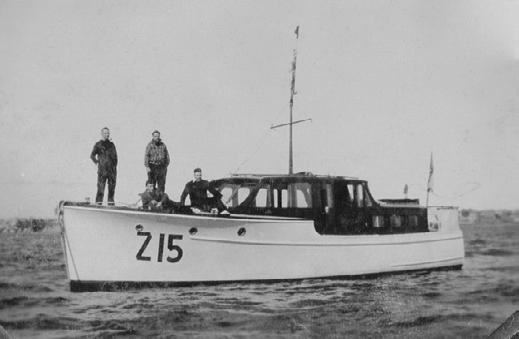
Bartlett’s ownership was brief and she was sold shortly after launching to a Frank Pidgeon. Fast forward a couple of years to 1943 when New Zealand was at war and Rehia was one of many motor vessels enlisted into service by the New Zealand Navy for harbour boom patrol operations. Several New Zealand harbours were protected with anti-submarine net booms during the war. Rehia’s patch was the boom off North Head, Auckland and during this period she sported the NAPS (Naval Auxiliary Patrol Service) number Z15 and her owner Frank Pidgeon was skipper.
Post World War II
Rehia was sold to Bill Ryan who deserves a medal as Bill resisted the urge to modernise the layout/style of Rehia Post war this was a common trend that coincided with the arrival of American boating magazines like The Rudder. In New Zealand it is very rare for an early classic to survive without having being fiddled with by, at the time, well-intentioned wooden boat tradespeople.
For Rehia to have reached the grand old age of 86 years and still be more-or-less as launched, is probably down to two factors, the first being that her designer/builder got it right first time. The quality of materials, construction and craftsmanship is evident throughout Rehia, the second is having a succession of educated, respectful owners who appreciated what they were custodians of - a craft that retained her original aura, character and pedigree. And if there was a third factor - deep pockets or at least enough to retain the best tradespeople to care for her.
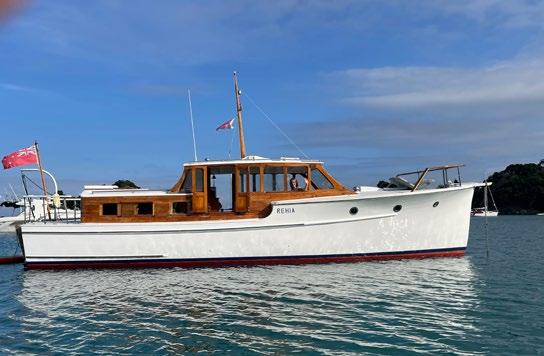






TOP: The Telfords enjoying Rehia during the summer months. REMAINDER: Work being carried out at The Slipway Milford Yard.
Throughout the years Rehia has been maintained to a standard that would make Colin Wild smile, and at the same time had the addition of modern systems and technology to ensure the best in safety and home comforts.
After an extended period of ownership Rehia changed hands in late 2021 to the Telford family - Amanda and Joe - who are committed to continuing the rolling restoration having already committed to upgrading her systems and addressing some deferred maintenance issues. They commissioned a JPPJ (a Jason Prew paint and varnish


job) at The Slipway Milford yard. The Telfords use Rehia every summer as she was designed - a comfortable family cruiser - then undertake her upgrades and maintenance in the off-season.
Rehia always gathers admiring looks and comments when under way or at anchor, but I believe the true measure of a boats beauty is found in a saying that I believe originated from L. Francis Herreshoff that goes like this - “if as you walk away or row away from your boat, you do not look back at her, you own the wrong boat”.
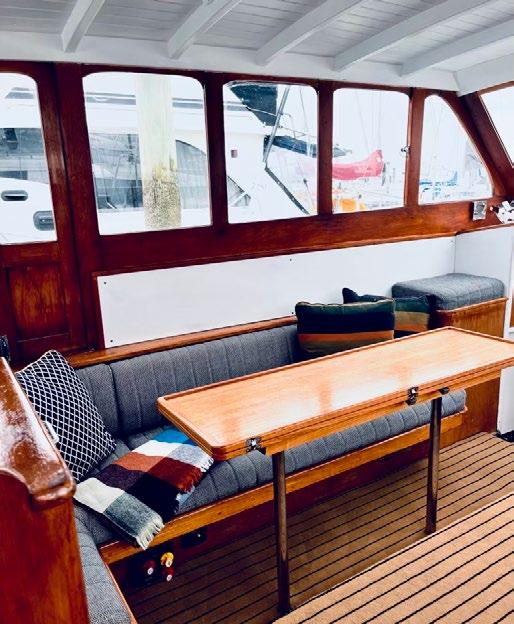

THE WORLD’S FINEST WOODEN BOAT VIDEOS



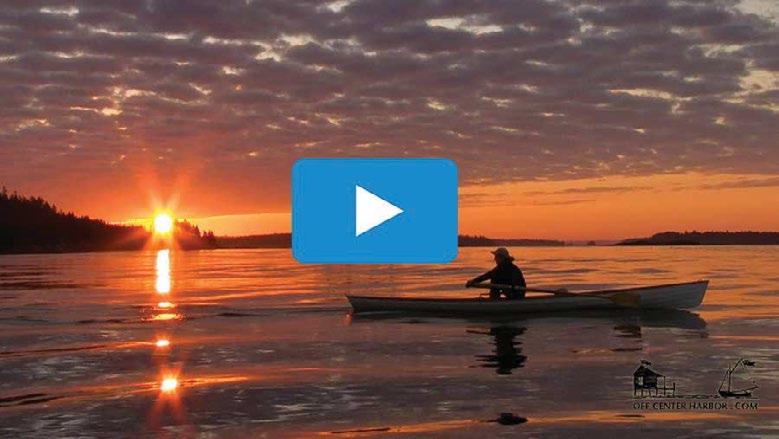



Norwegian Faering
Alaskan Trawler Bahamian Runabout
Mullet Boat
STRICTLY FOR THE BIRDS
WORDS: Frances Walsh
For three years, eight months and 16 days in the 1980s Gerry Clark was a man on a derring-do mission. In his small yacht Totorore he chalked up 38,500 nautical miles, sailing from Kerikeri to southern Chilean archipelago and then to Antarctica all in the service of the seabirds of the Southern Ocean.

By 1958 the English-born Gerry Clark was living in Te Tai Tokerau with his wife Majorie and their four children, developing an organic orchard. At least initially, Clark was out of his depth. The family had arrived in Kerikeri by way of Singapore where he had been an assistant marine superintendent for the Straits Steamship Company, the apex of a seafaring career begun in 1941 at the Thames Nautical Training College in Kent, scene of mute swans gliding across the estuary. Fourteen at the time, cadet Clark was already five years into what was to become a serious birdwatching habit.
In Kerikeri, while attempting to deal with mites and cottony cushion scale, Clark also kept his hand in. He took on skippering jobs and delivered ships and boats across the oceans to supplement the family income and to fund his odysseys. After taking boatbuilding lessons at night-school, he built Ketiga in 1968 and a couple of years later sailed the 7-metre engineless yacht in a singlehanded trans-Tasman race.
In 1972 Clark embarked on what he described as a “bird-watching voyage” in Ketiga — circumnavigating Aotearoa and taking in subantarctic islands, observing the loss of seabird breeding grounds and speculating that over-fishing, introduction of predators and other human interference were to blame. Citizen science duties aside,

Gerry Clark at the helm of Totorore somewhere in the treacherous Drake Passage, between Cape Horn and Antarctica, December 1983. NZMM 2017.40.473.
Photograph by Cowan, Alan. NZMM 2017.40.473
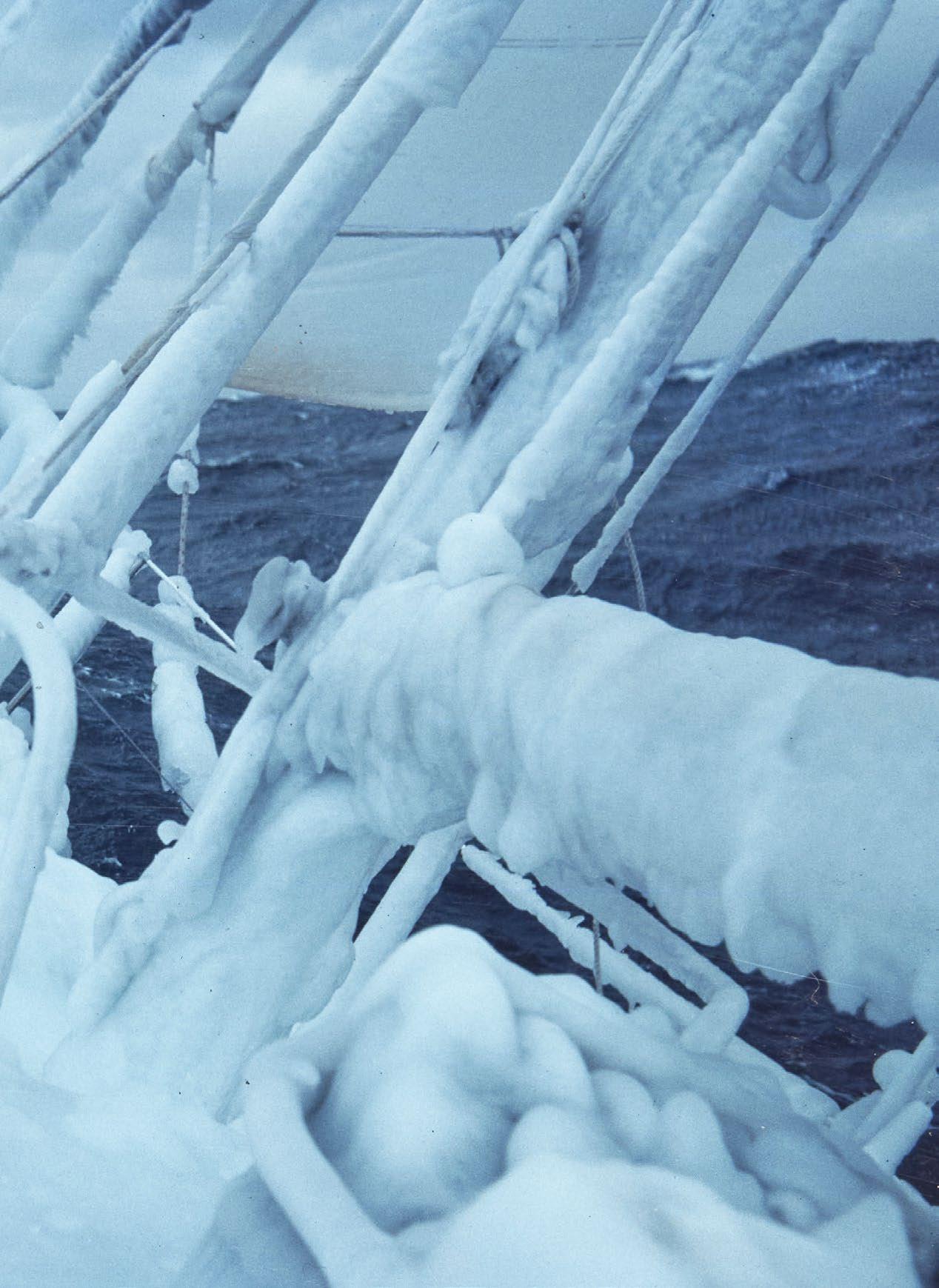
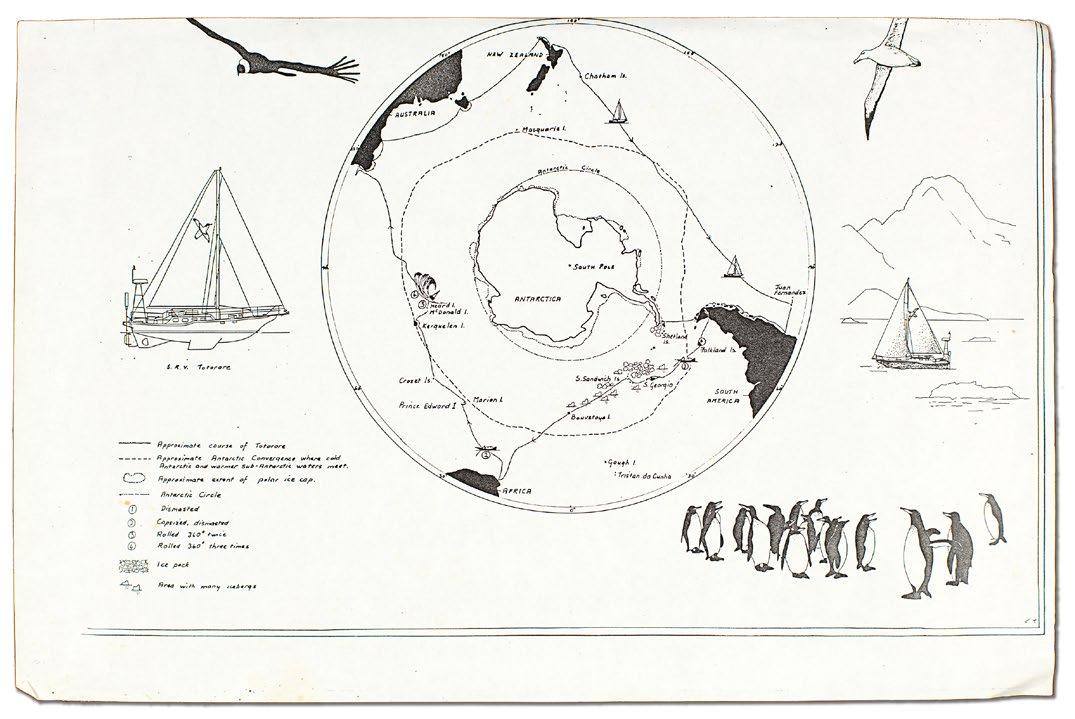
Hand-illustrated map of the route taken by Totorore (1983-1988), with locations of two dismastings, and five 360°rollings marked. NZMM 2017.40.1752


Gerry Clark in his element, on Bounty Island with erect-crested penguins (Eudyptes sclateri) and Salvin’s albatross (Thalassarche salvini), 1970s. NZMM 2017.40.283
Clark used the 3,000-plus mile voyage to raise funds for the Society for the Preservation of the Kerikeri Stone Store Area; members of the public sponsored Clark at 50 cents a mile. In Ketiga’s logbook Clark also recorded a deeper motivation for his offshore wanderings: “It is only at sea that I really feel at peace and in harmony with my surroundings. I love seabirds, the creatures in the sea, and the sea itself.”
Photograph of a light-mantled albatross (Phoebetria palpebrate) on the Auckland Islands, taken during Gerry Clark’s 1972/3 ‘bird-watching voyage’ on his homebuilt yacht Ketiga. 2017.40.4034
Back in Kerikeri Clark became highly focussed. He joined the Ornithological Society of New Zealand, as well as the Australasian Seabird Group. Then there was more boatbuilding — from 1975 and in the following seven years he upscaled Ketiga, constructing — “painfully slowly” he wrote — a 4-berth, 11-metre motorized kauri cutter with a draft of 1.4 metres and twin ballast keels for landing and resting on a beach or rock shelf in parts of the

ABOVE: Totorore under construction at the Clarks’ Homeland Orchard, circa 1980. NZMM 2017.40.2432
TOP SLIDE: A colony of chinstrap penguins (Pygoscelis antarcticus) photographed from Totorore, near Sandwich Islands in the South Atlantic Ocean, 4 September 1985. NZMM 2017.40.728
BOTTOM SLIDE: Totorore, Chile, 1984. NZMM 2017.40.2653
world where conditions routinely terrify.
He named his yacht Totorore after the abundant little bird (Antarctic prion/Pachyptila desolata) widely dispersed across the Southern Ocean, and often found storm-wrecked on the West Coast beaches of New Zealand’s South Island, come winter. ‘Totorore is built of wood, because I like wood,’ wrote Clark. ‘It is a natural substance which is pleasant to work with, and which up to a point I can understand. I can like a boat of steel, of aluminum, of fibreglass, or even of ferro-cement, but I do not like working with those materials which to my mind have no soul. Wood is different; I can love a good boat built of wood.’
Totorore motored down the Kerikeri Inlet on 26 February 1983, shortly after a vicar led a crowd in the singing of “For Those in Peril on the Sea”. Onboard were the 56-year-old Clark, two crew members (Ken Back and Squirrel Wright), and 50 vacuum-packed loaves of Vogel’s bread. The boat was Antarctica-bound via Chile on an expedition that was to take close to four years, the aim to assess the numbers and distribution of seabirds in order to inform conservation policies. Clark had developed a programme of work after seeking advice from ornithologists around the world. On the itinerary were the outer islands of the southern Chilean Archipelago and various subantarctic islands, since bird surveys of both regions were few and far between — largely because of the harsh, hair-curling environmental conditions. Experts approved: the expedition received the imprimatur of the International Council for Bird Preservation and the Ornithological Society of NZ . Although sometimes sailing alone, for much of the expedition Clark was assisted by one or two companions.

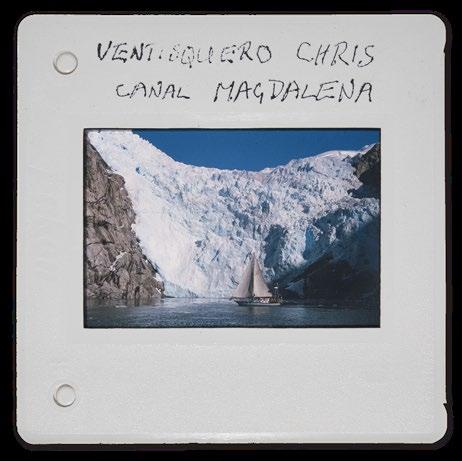
In all 26 sailors and ornithologists did voluntary stints on Totorore. Ideally when surveying bird habitats at least three crew were required, two to make landings and one to stay with the boat. Writing Clark’s obituary in 1999 ornithologist Mike Imber (gadfly petrels genus Pterodroma a specialty) noted master mariner Clark was often content to stay onboard Totorore ‘and keep her shipshape while others did the birdwatching, the major trips ashore, and if sufficiently well (for Totorore challenged almost every stomach) the cooking.’
But sometimes Clark headed to shore. His journal entries for April 1984 record trips in an inflatable dinghy from Totorore to Cape Horn, the rocky headland on Hornos Island in southern Chile’s Tierra del Fuego archipelago where the Pacific and Atlantic oceans converge and go extremely wild. Clark was on the dinghy with crew members Anthea Goodwin and Julia von Meyer— their mission to nab blue petrels (Halobaena caerulea). ‘Every landing and embarkation had been a worrying, uncomfortable, traumatic experience’, wrote Clark.

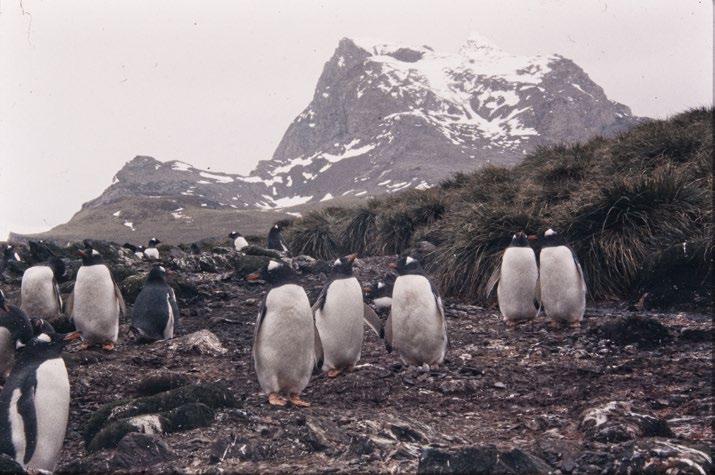

Once on the Island-proper things were similarly action-packed. After climbing a 406-metre cliff the threesome waved nets about and were in imminent danger of falling down the cliff. They were attempting to catch incoming petrels as they flew in from foraging trips way out on the ocean and headed to their burrows after sunset. In a tent hauled from Totorore Clark and co then went about their taxonomic work: ‘Back in the more friendly world of the tent…in the warming glow of the small hurricane lamp, we measured our blue petrel,’ Clark wrote. ‘A very pretty little bird...he was rather lively and bit Anthea vigorously, drawing blood. We then deloused him…and put him to bed in the sack in the porch of the tent, to await having his photograph taken in the morning.’
Clark and his crew were to make some of their most significant ornithological observations in southern Chile. Blue petrels aside, they documented breeding colonies of black-browed mollymawks (Thalassarche melanophris), thin-billed prions (Pachyptila belcheri), sooty shearwater, (Ardenna grisea) and rockhopper (Eudyptes chrysocome) and macaroni penguins (Eudyptes chrysolophus). Further south at South Georgia the expedition further ensured mention in journal articles and scientific studies for years to come by conducting accurate counts of wandering albatross (Diomedea exulans) and king penguins (Aptenodytes patagonicus) along the entire indented coastline of the 160km long subantarctic island as well as its satellite islands—a feat which occupied two winters.
Impressive accomplishments weren’t restricted to the birds. In a storm between Cape Town and Marion Island in the Indian Ocean Totorore lost its mast. Clark was sailing on alone with a jury rig when off Heard Island the boat rolled 360 degrees five times in seas with 35-metre waves. ‘I was soaked, frozen and battered, and in mortal terror of the next roll,’ he wrote. Only the thought of his family stopped him from stepping over the side and ending it all. He managed to keep Totorore afloat for another 68 days, drifting and sailing to the Australian coast near
and base for bird surveying atop Cape Horn, April
Gentoo penguins (Pygoscelis papua) photographed during the Totorore expedition at Bird Island, South Georgia, October 1984. NZMM 2017.40.3072
Fremantle, tarpaulin strapped between bipod masts made of spinnaker poles.
Clark eventually motored home and up Kerikeri Inlet on 7 November 1986. Not long after, he was asked by the journalist Brigit Manning of The Press what was so special about birds. ‘Hard to say,’ said Clark, rallying: ‘I just love birds. They’re fascinating, the orderliness of their lives, their grace of movement and freedom. They’re so beautiful, so much a part of the quality of life. I wouldn’t care to go to sea if there were no birds to look at. I never feel alone when there are birds. They’re always around down south.’ Manning still in need of convincing, asked Clark if the Totorore expedition was really just about the birds of the Southern Ocean. Wasn’t he also pitching himself against nature and other legendary explorers? ‘When you go down there, there’s nobody to watch,’ Clark replied. ‘It’s not a competitive thing. The way I sail, there’s no particular skill in it. I don’t know the finer points of sailing and they don’t particularly interest me. As long as I can get home safe, know where I’m going and get to the places I want to go, I’m quite happy.’
TOP LEFT: Totorore’s inflatable dinghy and crew member after a hairy landing on Cape Horn, 30 April 1984. NZMM 2021.43.70 Expedition campsite
1984. NZMM 2017.40.5360



In the next decade Clark kept up his conservation efforts, undertaking several voyages in Totorore assisting scientists count, map and study birds. On 11 June 1999 shortly after dropping two albatross researchers on Antipodes Island, and as gale force northerly conditions were about to hit, Clark radioed that Totorore was losing battery power. Clark and his companion Roger Sale were never heard from again, and only small pieces of Totorore’s wreckage have ever been found. This despite comprehensive searches of the island, its coast and of 70,000 squares miles of surrounding ocean, including by the ketch Ranui and an Air Force Orion. Such was the regard for the then 72-year-old Clark’s powers of survival that his whãnau found his loss unimaginable. Three weeks after all contact with Clark and Sales was lost, Majorie Clark was to tell the New Zealand Herald: ‘We are not a
LEFT: Gerry Clark refuelling at Bird Island. NZMM 2017.40.2248
RIGHT: Gerry Clark and Totorore’s homecoming, Kerikeri wharf, 7 November 1986. NZMM 2017.40.3865
bit worried about him. We think he won’t have a clue of what has been going on and will be rather distressed if he knew the trouble he is causing.’
Gerry Clark’s daughter Elsa donated her father’s archives to the New Zealand Maritime Museum Hui Te Ananui o Tangaroa in 2017. The Gerry Clark Collection is now digitised. Go for a browse of the collection at https://collection.maritimemuseum.co.nz/explore
Frances Walsh is the inhouse writer/editor at the NZ Maritime Museum.
TOP: A colony of chinstrap penguins (Pygoscelis antarcticus) photographed from Totorore, near Sandwich Islands in the South Atlantic Ocean, 4 September 1985. NZMM 2017.40.728

Tonnant Creation Crucifixion and Resurrection

Emigrating from Bulgaria, our family followed suit. We rebuilt and sailed a Guzzwell’s Trekka, runabouts, dinghies, a Stratus 747, Logan’s Gypsy (partially), and a Davidson 31 – Tonnant.

WORDS & PHOTOS: Boris Penchev
Doubtful Sound
The latter we bought in 2012, half-dead, developing rot, taking saltwater and freshwater. Radical, resurrecting labour without fasting, praying, asceticism and abstinence took place on our driveway and was carried out by the family for nine years.
Tonnant was stripped from masthead to keel bolts. The triple skin kauri hull was thoroughly repaired and refibreglassed.
The following was removed, modified and upgraded: skeg, rudder, bulkheads, cockpit, some decks and bulwarks, cap rails, railings and rails, propulsion and engine bed, deck hardware, and chainplates, seacocks, galley, head, tanks, plumbing, wiring, mast and boom fittings….
In 2016, Laurie Davidson was briefed on the progress. Being pleasantly surprised, he generously presented us with the original set of drawings.
We installed a new propulsion complex comprising a 3YM30-Yanmar and a 4-blade feathering propeller.
Also new seacocks, three electric and two manual bilge pumps were installed, plus fresh and saltwater pumps, tanks, plumbing and wiring.
The new boosted mast step incorporates lightning protection. Larger chainplates received extensive internal strengthening. The mast and boom were renovated and the rigging became 1mm thicker and reinforced with additional running backstays, checkstays and two removable inner forestays, both on highfield levers. All headsails are hanked on.
We installed nine Lewmar winches: two on the mast, one on the boom, two on the cabintop, and four in the
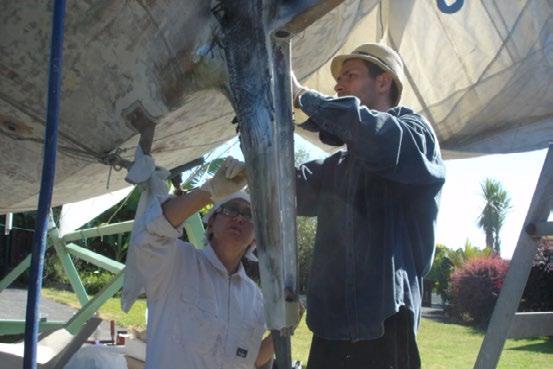
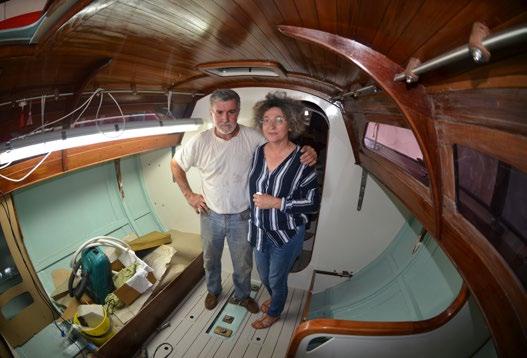
cockpit.
A new main and genoa and a range of almost-new sails from trysail to spinnaker and gennaker on removable prod are now carried.
The anchoring system comprises homemade bow-roller fitting extending from the bow to the bulwarks and the deck; Lewmar windlass, two 8mm chains (50 and 30m) two 80m 14mm ropes and three anchors, a15kg Rocna, 15kg FOB, and a 21kg CQR plus a huge bollard secured with large brackets to a new bulkhead.
A folding Aries windvane, Simrad tiller pilot and a tiller-clutch to assist solo sailing.
Sealed at the bow are soil from Auckland and my father’s ashes, while two cockpit planks have the names of Peter Bailey and Peter Oxborough engraved on them. Aren’t boaties romantic and superstitious?
Around the time we adopted Tonnant, our grandchildren Oskar and Audrey were born. They joined the school of resurrection witchcraft and became the proud owners of a home-resurrected Optimist called Kote-Kote (Kitten-Kitten). As loyal crew of Tonnant and Logan’s Gypsy, they have several Mahurangi and CYA regattas under their nappies. A Kiwi spirit in action! What else?!
Tonnant was launched in December 2021, but before that Greg and Lyn Blomfield, the longest owners, presented us with Tonnant’s spare tiller that had decorated Greg’s office for 40 years.
In 2022, we sailed the Hauraki Gulf, Great Barrier, Coastal Classic and several CYA races and a solo cruise of Auckland-Houhora-Auckland.



CLOCKWISE TOP LEFT: Svetlana and Dimitar glassing the hull; Removing the old engine; Laurie Davidson and Boris; Oskar and Audrey; Interior ready for remodeling .
Tonnant 2022-2023
SAILING AROUND NEW ZEALAND
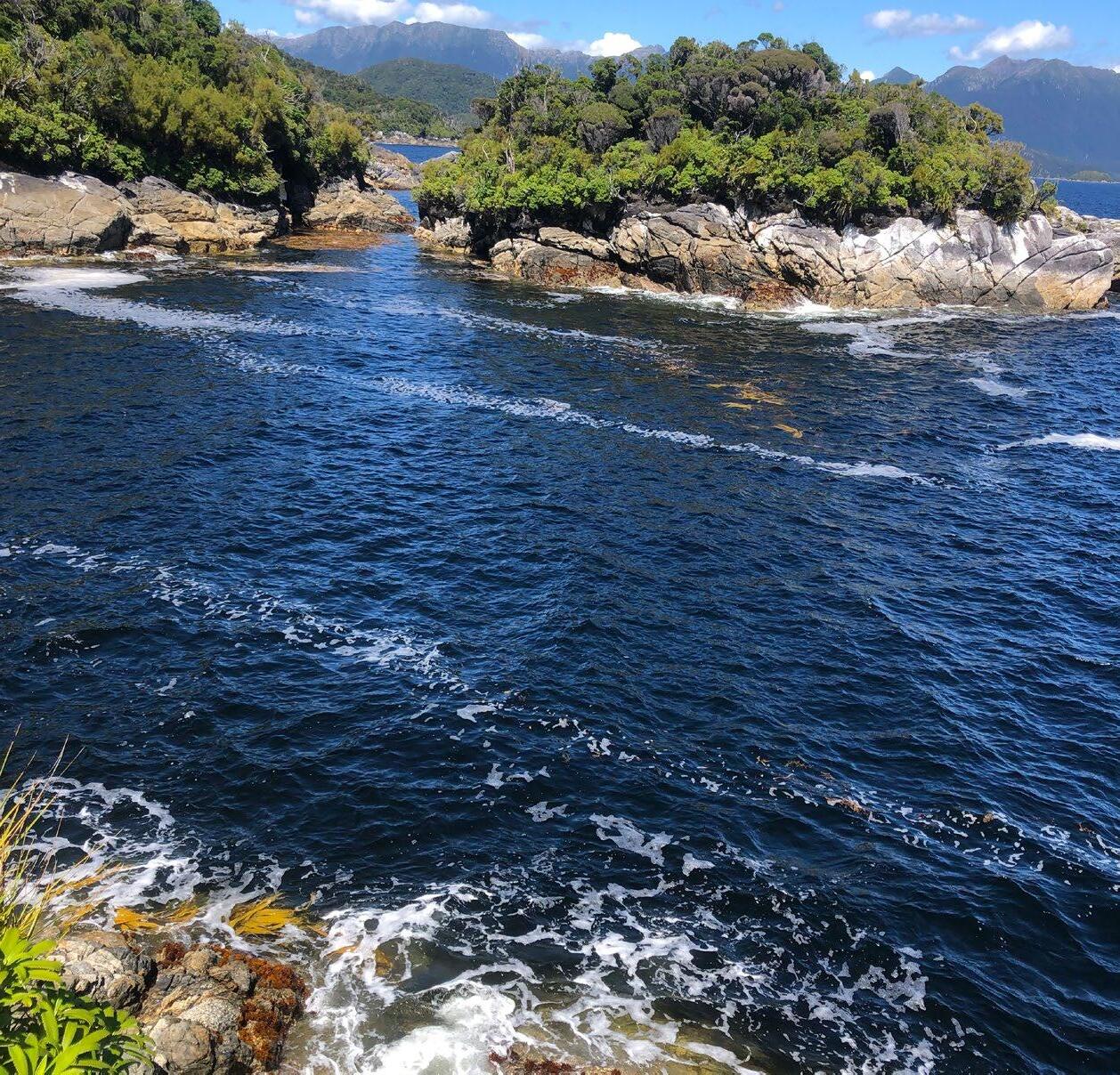
Moore’s Island Cruising Rally. Viki is loved by the boating brotherhood for making sailing around the Pacific safe, enjoyable and well informed.
26-27 Dec 2022, Auckland-Russell
Svetlana and I sailed to Russell for a Rally briefing. We learned that the 30+ Rally boats would start from different ports and at different times and will take various individual routes. Most will never see each other but will stay connected via WhatsApp. Eventually four boats circumnavigated all three islands. The rest explored Abel Tasman, Marlborough Sounds, Banks Peninsula. Three boats ventured along the East Coast to Stewart Island.
29 Dec 2022 - 1 Jan 2023, Russell-Taranaki
Russell to Cape Reinga - alternating genoa and spinnaker. At Cape Maria van Diemen - chaotic gusts, whirlpools, messy currents were handled well by Tonnant.
2-3 Jan, Taranaki-Golden Bay-Tata Bay
Beam reach and dolphins across Cook Strait. Welcomed at Tata Bay by Rally boats River Wind, Passion IV and Mari.
5-12 Jan, Tata Bay-Nelson
Bumpy sailing to Separation Point and Tonga Island.
Svetlana flew from Nelson to resume her job and provide income while I cruise the rest of NZ. Is life fair?!
12-13 Jan, Nelson-Awaroa
Solo and free like the wind heading back to Golden Bay.
13-16 Jan, Awaroa-Milford Sound
During the nights, the halos of Kahurangi Lighthouse, Greymouth and Hokitika passed by on the horizon. During the days a long white cloud garlanded the West Coast every day.
At Milford Sound, the sense of achievement and awe was quickly drowned by the relentless caravan of tourist





craft, flashing cameras and roaring helicopters.
At Freshwater Basin hostile tourist operators confronted Tonnant. At Deepwater Basin friendly fishermen offered me a free mooring.
I found the rest of Fiordland genuinely superior to Milford in all respects.
The vistas were similarly glorious with the addition of hundreds of islands, anchorages and beaches, lakes, waterfalls and wildlife.
Advancing south shortened the night watches.
In return, the ocean worsened. Sou’sou’westerlies 20 to 30 knot plus were common. A perpetual westerly swell would mix up with wind-and-current-generated surf to create 2-4m confused seas with occasionally bigger rollers. Boom preventers became vital.
Logbook: “West Coast - shitty 90% of the time. Fiordland and Stewart Island - paradise 90% of the time”.
18-22 Jan, George Sound
Elusion V, Rob and Catherine from Hobart were the only souls.
Bathed in the Alice Falls, climbed to Catherine Lake completely unprepared, and on my descent got lost under the high rain-forest canopy. Fortunately, I dragged myself to the anchorage that evening, and succumbed into Tonnant’s heartwarming belly.
22-25 Jan, Caswell Sound
Through 3-4m waves and 25-30 knot head winds Tonnant kept a smooth motion and reasonably wet cockpit.
Anchored at Green Point under 1200m peaks. Climbed to Lake Marchant.
25-27 Jan, Charles Sound
At Helipad anchorage, Amason came to give me seven crayfish!
At Emelius Arm and Eleanor Island, small whales
OPPOSITE: Richard Henry’s Pigeon Island, Dusky Sound. CLOCKWISE FROM TOP LEFT: Tonnant with #2 head-sail; Svetlana catches dinner; Svetlana on watch; Deepwater Basin, Milford Sound; Course taken around New Zealand.
1st Enter a fiord in daylight. Approaching at night demands maintaining 500m depth for as long as possible and a powerful spotlight as crayfish pots festoon Fiordland even to the 250m-depth mark.
2nd Congratulate the dolphin-aquatic-angelsshow-off-enthusiasts that will greet and bodyguard you at every entrance and ramification of the fiords and would jump dramatically to produce pompous splashes.
3rd Search islets, beaches, coves and anchorages dispersed along the maze of interconnected fiords and their arms, legs, toes, and fingers.
4th Use full rode length plus stern-lines. The fiord heads are usually all-weather proven. Sometimes, suitable lines are provided from trees or fixed between buoys. Sandflies are manageable 20-30m from the shore.
5th Row up estuaries to waterfalls, climb to peaks and lakes, check DOC huts.
The visitors’ books show a random annual entry, mostly by delivered tourists. Fiordland remains authentic and touching. As Rob and Catherine from Elusion V said: “Here one may stumble on a taniwha or a dinosaur enjoying a quiet nap.”
6th Visit historic places: Luncheon Cove, where whalers built the first NZ house and the first NZ-built ship Providence in 1792, Pickersgill Harbour that in 1793 was enjoyed by Cook’s Endeavor for another transit observation, and the brewing of the first NZ beer. Or pay respect to newer relics: Richard Henry’s Pigeon Island, shipwrecks and mining ruins.
7th Read historical accounts! John Hall-Jones’ books and Mana Cruising Guide are essential but check “Beneath the Reflection”. Without these, one experiences less and does not link the natural features to the early NZ history.
8th Maintain Tonnant, drink, listen to music and play the guitar.
9th Fish, but don’t forget the fishing gear. I had to improvise. And they appreciated it! The tuna, blue cod, kahawai did! And terakihi and trumpeter kept feeding me too.
I collected mussels from water-washed branches. Others would dive for scallops, paua and crayfish in the translucent waters, unless they were stained by tannins washed from the forests. If lazy or unlucky, wave innocently “Hi” at the occasional fishermen. They will offer you crayfish for free, may top up your diesel tank, give you vegetables and even a cold beer!
10th Marvel infinitely at pristine Fiordland and Stewart Island, where mollymawk/albatross encounters are common and human meetings are rare. I saw one Rally vessel in Fiordland and two in Stewart Island, plus three other yachts.






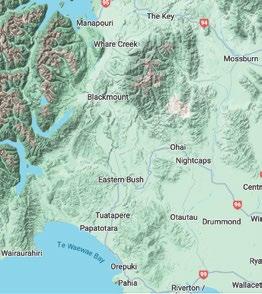



played nearby. First serious rain since Christmas and picturesque thunderstorms!
27-28 Jan, Nancy Sound
The rough passage to Nancy was made worthwhile by the divine Toe Cove!
28-31 Jan, Thompson Sound, Bradshaw Sound
Surreal: Dias Cove, Precipice Cove, MacDonnell Island, Gaer Arm, First Arm, Snug Cove, Crooked Arm, Haulashore Cove!
31 Jan - 01-2 Feb, Doubtful Sound Deep Cove, Hall Arm, Blanket Bay, Pendulo Reach, Secretary Island.
Deer shooting is popular here. At Deep Cove, Bill “sold” me venison meat, and even alcohol, but refused payment!
2-12 Feb, Breaksea Sound Barometer 997 then 5 then 3! The ultimate prophet! NE 35-50 knots, disorderly seas, broad reach, three reefs and a storm staysail, later under storm staysail only, doing 7-10 knots. Squalls with horizontal rain, poor visibility, shore engulfed in mist-fog-spray. Any brief sliding of the hatch to see the GPS inside would send water below. Heeling 20-40 degrees, and still Tonnant remains balanced
and easy to steer.
A failed jammer led to an unintended jibe that knocked me down semiconscious. The impact would have been worse if the mainsheet had not tangled up and shattered a winch handle.
Similar conditions plus hail and several small tornadoes alternated for about a week while motor-sailing under two reefs and #3 to: Vancouver Arm, Broughton Arm, Third Cove, Harbour Islands, Sunday Cove, Beach Harbour, Wet Jacket Arm, Stick Cove and Mussle Cove (wicked beauty), Acheron Passage, Bowen Channel and Cooper Island Eastern Cove.
Here the catamaran Enola with Jay and Sandra found me. We sailed together to Sportsman Cove and other places and met again at Stewart Island.
Explored also: Pickersgill Harbour, Cascade Cove, Luncheon Cove where Noomi (Anna and Daniel) had anchored and walked to Kirirua Lake. Sailed to: Petrel Island, Anchor Island harbour, Goose Cove, Cormorant Cove, Pigeon Island.
12-17 Feb, Chalky Inlet
NW 12-18 knots broad reach, full main and spinnaker. Anchored at North Port by Stella’s wreck.
OPPOSITE: Fishing by waterfall of Lake Cove, Edwardson Sound, with no results; Davey Jones and son Rhys on Kelvin; Extensive exploring of Fiordland. CLOCKWISE FROM TOP LEFT: Tonnant, Enola, Noomi rafted up in Cormorant Cove, Dusky Sound; Jay, Charlotte, Sandra, Anna, Daniel; New Zealanders Rob and Catherine on Elusion V, sailing from Hobart.
Next: Cunaris Sound, South Port, Sealers Bay, Lee Bay, Lake Cove, Lumaluma Creek. Hiked with Sandra and Jay to Lake Cadman where we found a dinghy and rowed it, then walked to Cora Lynn Falls.
17-24 Feb, Preservation Inlet, Isthmus Sound, Long Sound
Anchored at Welcome Bay. Walked along Prices Beach. Later went to divine Spit Islands and Cuttle Cove. Explored Cording Islands and anchored at Isthmus Sound Lime Island. Rowed to Tarawera smelter and its unique chimney built on a slope.
Spent time at Weka Island, Cemetery Island and in Kisbee Bay with the Preservation Lodge, where an 8-yearold girl had shot her first deer last week! Her father Luke purchased Mith of Arran in Warkworth. “Permanent job could be a bad habit”, he mentioned.
At Te Oneroa, went to the hut and ascended the hill to see mining metalworks in the bush.
At Otago Retreat stopped at Lighthouse anchorage and climbed 5-6km to Puysegur Point Lighthouse.
At Long Sound katabatic winds accelerated Tonnant to 9-10 knots across glassy waters to Cascade Basin.
24 Feb - 02-5 Mar, Foveaux Strait, Stewart Island: Easy Harbour, Port Pegasus
Just before leaving Preservation, Stewart fishermen from Gal Bank Able and Jasmine offered me tuna and diesel and refused payment!
Aurora Australis crowned the Foveaux Strait stormy cocktail while about 150 Starlink satellites in a strictly spaced chain travelling north-south! Close to the southern cross each satellite produced a small “puff” and vanished in a small white cloud that grew with every next puff and remained visible for hours.
Rested at heavenly Stewart Island Easy Harbour. Not a soul.
Next - Port Pegasus, where tourist and hunting parties are delivered.
Met Crusoe (Amy and Luke). They took me climbing Bald Cone.
Explored Shipbuilders Cove, Island Cove, Sylvan Cove, Disappointment Cove.
Met Brian Elliot (75) on Ellen Rose – a Bruce Clark 32-footer based in Whangarei. We cruised together almost to Tauranga and enjoyed pleasant stories and evenings.
At Reefer Cove - Seal Creek, met a cheerful camping group. Steve and Tony had kayaked around Stewart Island years earlier. Went diving with them and in the evening rowed and walked across a hill to party with them.
Next – Pegasus Passage, North Arm, Bens Bay and Waterlily Bay where David and Keffie from a super-launch came to give me scallops.
Cape Horn, Twilight Cove, Cunning Cove followed.
At Settlement Wharf met Davey Jones (87) and his son Rhys (57) on the 100-year-old Kelvin, (see Yearbook 2021 page 88) pushed by a 70-year-old Lister.
5-9 Mar, Lord River, Paterson Inlet, Oban
Back into the ocean’s washing machine and heading up the coast. The orange sandy beaches along Lord River, the zigzagging contours and white sands of Port Adventure were worth the windward passage. The conditions
improved suddenly to the north of Breaksea Islands, and by the end of that day I anchored at Iona Island, Paterson Inlet.
Kelvin and Ellen Rose arrived the next day. Attitude with Cyril and Janine from the Rally joined us, and we all sailed to Kaipipi Bay for the night.
Hilli and Jim Barrett invited Brian and me for dinner at their Oban home and told us local stories.
My capacity for excitement started dwindling. I felt like sailing home.
9-15 Mar, Cook Strait, Banks Peninsula, Akaroa Monstrous kelp was everywhere. Ten miles from Banks Peninsula and with approaching night the weather deteriorated. Although motor-sailing, strong head winds and currents permitted only 1-2 knots. Then the water pump belt broke. While heaving to and rocking violently, removed the alternator to install new belt. By 2 a.m. on March the 12th arrived at French Bay Akaroa.
Later Brian and I took shelter at Takamatua Bay and Children’s Bay because of strong winds. At Akaroa I had my first professional hair cut in 25 years!
15-23 Mar, Lyttelton
Banks Peninsula bizarre circular-cake-shape with regularly cut out gorges causes gusts coming down the valleys. The Lyttelton Harbour, despite being a long, beautiful fiord is intimidating weatherwise. Anchored in Corsair Bay among Rally boats: Di Trieste, Crusoe and Sharita (Don and Mary). Ellen Rose came too.
Brett and Liz from Di Trieste invited us all to watch Sail GP from their decks.
Nasty nights. 30-50 knots. Changed anchorage to Purau Bay.
From the Log: “Lyttelton, you are the worst place I have seen”.
No petrol station in Lyttelton?! Matt Blythe, the marina manager gave me a free berth for half a day and Viki Moore graciously took me to Christchurch in her car to fill a couple of cannisters!
The Simrad tiller-pilot resumed functioning for the first time since Milford Sound.
The Coastguard reported that Cyclone Gabrielle had littered the East Coast from Cape Kidnappers to East Cape with logs. Most crews decided to leave their boats in Picton, Wellington or sail back along the west coast. Brian and I took the risk.
23-28 Mar, Lyttelton, Tauranga
Ellen Rose and Tonnant left together. We saw debris and logs past Cape Kidnappers. During the nights several minor collisions occurred. Running over a 2.5m long log was inconsequential. The reinforced bow with a metalstrip-cover along its entire length worked well.
Frequent head winds. Lure landed kahawai, tuna, and kingfish. Comfortable naps during Simrad/Aries assisted sailing.
East Cape showed peculiar Van Diemen-like waters followed by vistas of Raukumera ranges reminiscent of Fiordland’s contours.
Before and after Moutohora Island and White Island hundreds of dolphins and many whales paraded nearby. I decided to stop at Tauranga where a friend of mine,
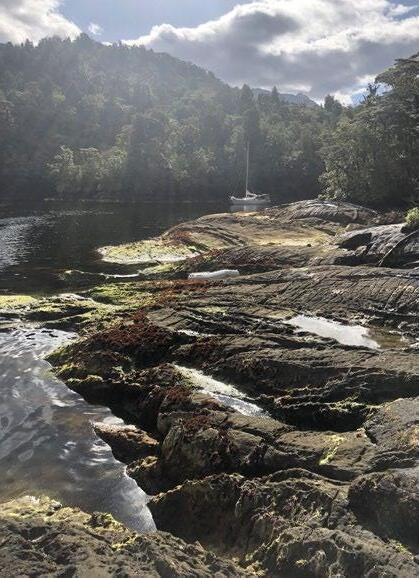
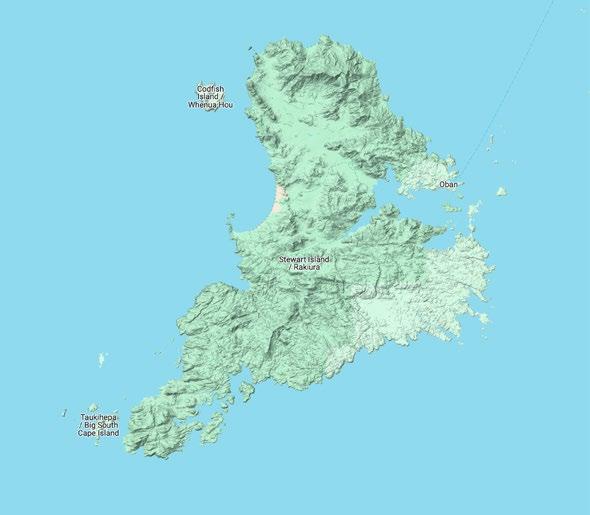
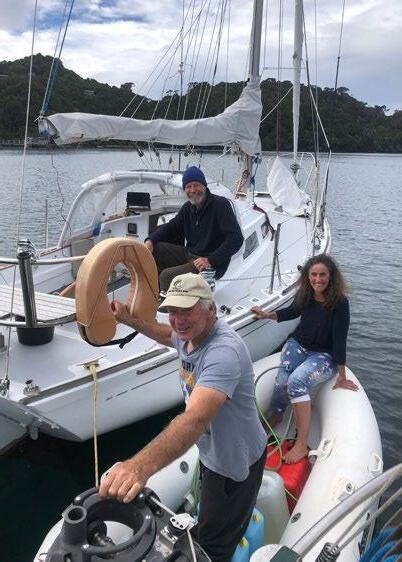

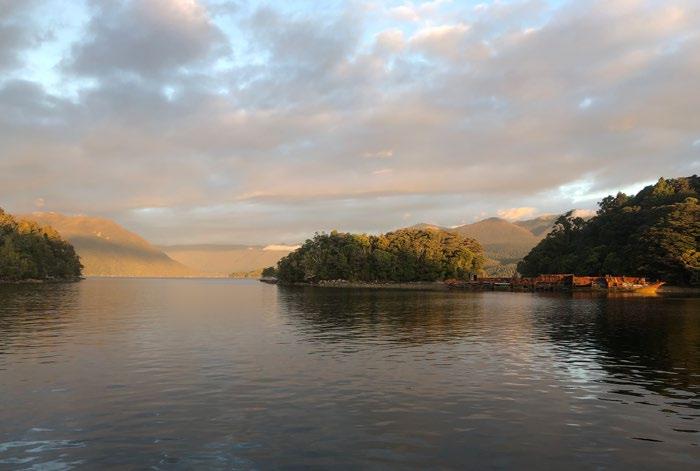
CLOCKWISE FROM TOP LEFT: George Sound, Alice Falls Cove; Third Cove, Breaksea Sound; North Port, Chalky Inlet, Stella’s wreck; Tonnant approaching Breaksea Sound; Picture from catamaran Enola; Course around Stewart Island.






Atanas, wanted to join me for the passage to Auckland.
Brian kept sailing nonstop to the Bay of Islands. He is more experienced than I and faster most of the time. Good on you Ellen Rose and Brian!
30-31 Mar, Tauranga, Great Mercury Island, Auckland
Atanas and I had a relaxing motor sail to Auckland with an overnight stop at Great Mercury Island.
The seas and the landscape around Cape Colville become elegant and welcoming.
Tonnant witnessed a blessed country, where a great variety of geographical phenomena and forever friendly attitudes are common. A country, where salvaging and relaunching boats is a shared soul-enriching / soulrejuvenating habit.
Many kiwis would agree that if there is something greater than love, this must be it.
Boris is a regular contributor to the Mahurangi Cruising Club Yearbook, also several other publications and his other stories should not be missed.
1. Mahurangi Matakana Matters, Issue No. 75, February 2003, Gift at Mahurangi Regatta February 2002
2. Mahurangi Yearbook 2003, p36, “Sailing, an Addiction Stronger Than The Nicotine”, Borislav Penchev
3. Mahurangi Yearbook 2005/6, p42, “When The Shit Matters”, Borislav Penchev
4. Mahurangi Yearbook 2017, p 50, “Tonnant The Battleship”, Borislav Penchev
5. Boating New Zealand April 2017 p. 74, “Bulgarian Re-boot”, Laurence Shaffler
6. Breeze, Royal New Zealand Yacht Squadron, Issue #246, Winter 2023, The New Zealand Classic Yacht Journal p.67, “A Tale of Plucky Boats and Voyages”, Penelope Carroll, https://issuu.com/rnzys/docs/breezedigiwinter23
CLOCKWISE FROM TOP LEFT: Isthmus Sound, Tarawera smelter with sloping chimney, abandoned in 1912; Islet Cove, Port Pegasus, Stewart Island; Bald Cone Stewart Island; With Luke and Amy from Crusoe at Bald Cone, Stewart Island; Folding bed in cockpit and Hilton Ward’s poems



Rainbow ROGER MILLS - HUMMINGBIRD
Gloriana ROGER MILLS - HUMMINGBIRD
Ngarunui ROGER MILLS - HUMMINGBIRD
The Undine Story

Sailing Undine was never dull, always a sheet to tweak, bilges to pump, topsail to dowse in a squall. With that enormous mainsail, some said, she required the constant vigilance of dinghy sailing.
We had just returned from an overseas trip when daughter Lisa and nephew Matthew pointed us to a small ad and picture in the New Zealand Herald ‘Boats for Sale – vintage cutter berthed at Thames’.
It was 1986, the family Logan cutter Spray II had been sold some years previously, and four daughters demonstrated that a Pied Piper was too small. Tessa made it clear that for family sailing she wouldn’t go with a noheadroom, centreboard mullety.
Nothing for it but a visit to the Thames “marina”, actually lanes of mud between mangroves – yet there was something about the green hull, the ten-foot bowsprit, fidded topmast and hints of red sails, not to mention a cargo hatch and a handsome wheel aft that
got us thinking about a partnership. But who would be sufficiently crazy to join us?
It was Spirit of Adventure fellowship that got John Burgess, fellow volunteer watch officer, and Bruce Marler, family friend and Spirit trustee to join us for a second visit. It was love at second sight, and a deal was done with the two farmers from Ngatea, Alistair McDonald and Barry Flint, who had bought her from Alan Brimblecombe after Ralph Sewell had converted her back to sail. The triumvirate mutually agreed that if we had her surveyed, cold feet would likely result – so willynilly in we dived.

The four of us took delivery in the muddy marina, waited for the rising tide and crept out under the 20 HP Bukh, only to run aground at the river mouth. It should have been a quiet night anchored in Awaawaroa Bay, Waiheke Island, but we were rudely awakened at dawn by early fishermen running at some speed into our bowsprit, demolishing his pulpit
WORDS & PHOTOS: John and Tessa Duder with Pete Richards

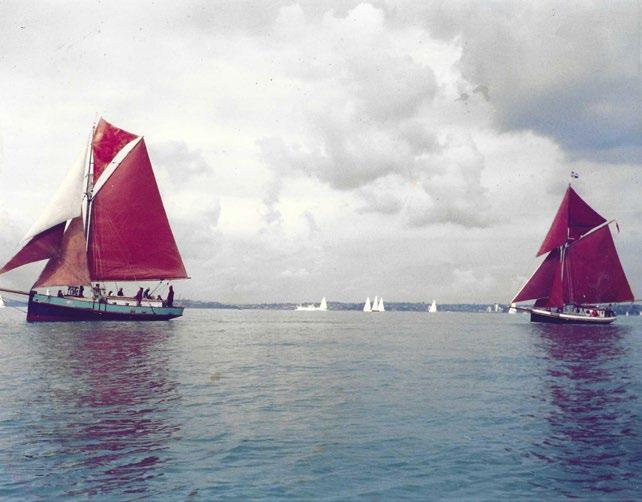
but just bending one of our rigging screws. After this juddering start to the return journey, we were welcomed into the Waitematã by Mike and Dee Pigneguy on Te Aroha complete with sea shanty band.
So started ten years of fun, good sailing and some racing success, including the Mahurangi Regatta and lots of restoration and improvements to hull, rig and sails, culminating in her 100th birthday party at Kawau with a load of tea tree firewood for Auckland.
Undine was built by the young Fuller brothers at Tangitu, northern Bay of Islands, sometime around 1887. Her first fifty years have been well documented by Hazel M. Cates, one of the Fuller daughters. While there have been some doubts expressed about her birth date and actual identity, we find sufficient photographic evidence to refute any questioning of Hazel Cates’s memories, and to note that there was another Undine yacht in Auckland, similar rig with high-peaked gaff but different counter stern, and longer bowsprit.
Why the unusual name? Our theory is that as practising Anglicans, Fullers would have been well aware of Bishop Selwyn’s mission schooner Undine which he built and sailed around New Zealand and to the western Pacific before she was lost in the 1870s. In passing, an Undine or Ondine is a mythical North European ageless water sprite – so far so good, as Undine approaches her 140 years in 2027. While in the Fullers’ employ, Undine serviced the family between the Kerikeri area and Russell, interspersed with the brothers’ goldmining jaunts at Thames, coal runs from Ngunguru and building materials for the Cape Brett lighthouse.

vessel until beached at Mangonui in the 1970s. Alan Brimblecombe of Warkworth heard she was to be burned, so removed her to Tauranga for restoration as a launch. However, when a false keel was removed, there appeared a centreboard slot. Enter Ralph Sewell to restore her cutter rig –now with topmast and topsail and his signature wheel steering and boxy cabin aft of a substantial cargo hatch. Alistair and Barry hauled her out by the Paeroa Bridge over the Waihou River and then berthed her at Thames.

Once sold from the Fuller family some time between the World Wars, she evidently acted as a relief fishing
When we took over, she was overballasted, down by the stern and with bilges full of mud evidently from leaks. Progressively we had the mainsail
OPPOSITE TOP: Undine with new colour scheme, acting as start boat, Waitangi. Photo Andrew Child; BOTTOM: The mud berth at Thames. THIS PAGE CLOCKWISE FROM ABOVE: Undine in the light; The Rewa and Undine; Undine on the Waitemata; Undine Water Sprite, book cover.


reduced in the luff and peaked up, reduced the ballast, had a beautiful deep red Dutch genoa jib partitioned into a handy ‘leg of mutton’ trysail and a fine white-edged, bigger work jib set flying. We embarked on ten full years of Duder and Marler family voyages to Waiheke and Kawau interspersed with racing at Mahurangi and in the
Waitematã particularly with Rewa, one year older and owned by Liz and David Waters before they retired her to the Maritime Museum.
Various refits included sailing up the river to Warkworth to remove a worm-eaten false keel and overhaul the engine, delighting a local farmer who said seeing the red topsail over the mangroves reminded him of Thames barges. The mast showed significant rot, so Salthouse Bros of Lucas Creek, Greenhithe, graciously provided the old mast of Akarana after she had been gifted to Australia for their bicentenary. Finally, a new deeper staysail from Frank Warnock. A photo “Downwind in the Light” from the Maritime Museum’s Bearings shows the whiteedged jib reunited with its larger half trysail as a spinnaker topsail; this was thought to be quite an innovation, until inevitably we located a fine precedent in the Royal Thames Yacht Club dating from the 19th century. The water sails were rigged by daughter Clare Duder (RIP) crawling to the boom ends before taking the photo from the dinghy.
Undine was the second boat berthing at the Bayswater Marina. She also featured with the two Norwegian centenarian topsail ketches Anna Rosa and Anna Christina, with Rewa providing a 400+ year line-up at Hobson Wharf.
Sailing Undine was never dull, always a sheet to tweak,

OPPOSITE TOP: Undine sailing with the Anna Christina and Soren Larsen; Transporting Undine for the relaunch at Paeroa c 1986
THIS PAGE CLOCKWISE FROM ABOVE: Celebrating Undine’s 100th birthday at Pohutukawa Bay, Kawau. Beach loading of tea tree; John takes bags of tea tree from Bruce Marler into the hold; Final shoveoff to beat the tide; Undine sailing in the Marlinspike Classic off Paihia Beach. Photo Stephen Horsley.
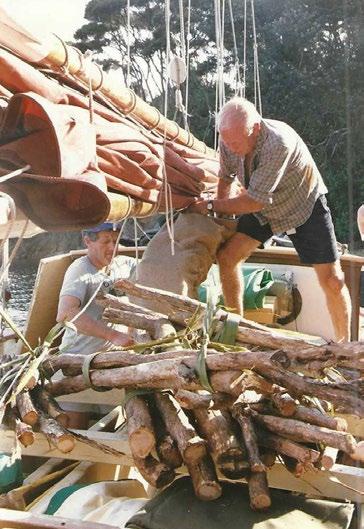


bilges to pump, topsail to dowse in a squall. With that enormous mainsail, some said, she required the constant vigilance of dinghy sailing. Being low-wooded and without lifelines above a substantial taffrail, one year she won the Mahurangi Regatta ‘Humane Act’ award – round the back of Saddle Island, a head was spotted in the water amongst the forty-strong armada. An ill-advised diver? No, on dragging the head and its kicking body over the lee rail, we learned the guy had fallen off a mullet boat, which could not turn back. As a last-minute addition to the crew, he didn’t know the name of his vessel – and they did not know his, until reunited at the prize-giving.
During the 1990s Undine was moored off the Marler residence in Herne Bay inside the Watchman. One strong flood tide when approaching the buoy under power, with the owner much preoccupied with trying to get the heavy centreboard up, the helmsman, unfamiliar with wheel steering, turned Undine’s bow in the worst possible direction, and she proceeded to mate with a moored trimaran. Fruitless efforts with block-and-tackle to disentangle the two craft finally succeeded by taking a line to a nearby mooring and Undine going full astern. Contact was made with the owner, who thanked us for being so honest, perhaps not realizing as we did only too
well that, being overlooked by the many houses on the Herne Bay slopes, we could hardly escape observation and recognition. That was proved the following weekend as we were engaged in fibre-glass repairs to the relatively minor damage done to the “For sale” trimaran by Undine’s heavy chain bobstay. Two Tongan fishermen passing by in a small dinghy rested their oars and pointing upstream to Undine just said, “Green boat did it!”
Herne Bay residents were not the only ones interested in Undine. Her broad cargo hatch made a perfect platform for shags eating and excreting fish but scrubbing and washing off fish bones put paid to any notion of evening drinks with a lady friend.
Eventually with the passing years, ageing crew, and Spray II back on the market, Undine was put up for sale in 1998. The first two applicants expressed the hope of sailing to Fiji or Australia. Duder and Marler heads were firmly shaken, and then Pete Richards appeared.

He was taken for a brisk sail under trysail and staysail and was hooked, presenting a time payment offer which was accepted. Undine was duly taken to the Bay of Islands with a stop for careening and scraping at Duders Beach, Kawau Island.
BY PETE RICHARDS (OWNER 1998 TO PRESENT)
The first time I set foot on Undine was over the stern from a boat broker’s inflatable. She was tied up in the Bayswater Marina and I had driven down from the Bay of Islands to see her. I straight away knew that I had found my boat. I wanted to take her back to the Bay, get her back into survey and set up a small charter operation following her original route in the Bay.
It took a bit of an effort to acquire the Undine. I couldn’t afford the asking price. But John and Bruce were very fussy about who would look after their baby. Eventually the broker arranged a meeting between the two parties; perhaps he thought that I was the only one mad enough to want her who John and Bruce would approve of? I was early to our meeting. So was John. Before Bruce arrived John quizzed me on my intentions, worked out my financial situation and agreed to let me pay her off over time.
And so the journey began.
Before that fateful meeting with John, I had asked Terry Dunn of Aorere for his advice, “You’re mad,” he said, “Stay well away from old boats.” He was right.
The survey identified an arm’s length list of things that I would need to achieve to pull off putting a 111-year-old boat into survey. With a big smile, and a couple of mates, I set off for the Bay of Islands. It took only about two weeks; taking an old, leaky, underpowered boat up the coast is great fun!
When we arrived in the Bay the thought of normal jobs went overboard and so “The Vege Run” was founded. A morning trip to local growers, a quick sail (yeah right) out into the Bay, anchor and row around all the moored

yachts selling fresh produce. Unfortunately we were unable to supply the most requested item…so Undine is not kept in a fancy marina berth.
After sailing her for a year to get to know her I embarked on the job of putting her into survey. I engaged Ron Hackett up by Tangitu, where she was built, to reframe her with his sons. “Six to eight weeks.” Two years later and with an intimate knowledge of a vessel that I had rebuilt, Undine floated again. A monster of a project. Thanks to all the family, friends and unsuspecting backpackers who joined me on the 45-minute drive on gravel roads to the back of the Bay to help saw, sand, caulk, rivet, paint, sand, steam, bolt and sand to restore her back to life.
She had all her frames and decks aft of the mast replaced so a complete refasten and caulk, a cockpit and tiller returned, cabin shortened, lowered and opened up, deck beams, shelves, beltings replaced and fastened with homemade bolts, new bulwarks and rails and no engine. All done mainly by hand as the generator was only started every couple of days. But she floated again.
Luckily for me and Undine, John and Bruce were okay with my slower than expected payment schedule as they saw that every penny I earned went into Und. It only took three times the expected time to square the ledger, about right for boat estimates.
I then had the fun of finding a surveyor to put her into survey. Plans to be drawn and approved, tests to be conducted and gear to be found, as well as many days sailing to justify being the custodian of such an amazing vessel. It was during this time that Undine exerted her fateful charm and acquired a co-owner, the amazing Catherine Langford.
With all the hurdles jumped Undine was ready at the ripe old age of 120 to re-enter service. Unfortunately Wall Street Bankers had different priorities and a global financial crisis is not the time to start up a small tourism business, unless you have a ready supply of capital to run down, so plans were changed.
ABOVE LEFT: Undine racing to Kawau ABOVE RIGHT: Sailing off Kawau.
And change they did. By the time the tourism market recovered Undine had hired a new deckhand - Oak Tangaroa Richards started sailing gaffs. I became a house dad and Und the family boat.
Undine doesn’t like competition for your time and as soon as she feels that your attention is wandering she likes to slip you a gentle reminder. So since my first restore she has had a new mast, two engines installed (she is now powered by a 20hp Lombardini), a new centreboard case installed and married into the engine bearers, seven metres of garboard, and many splines, tingles and patches, a new main and jib as well as a few paint and trim schemes. You quite often will find me under her at Waitangi on the hard. The principle that is followed when deciding how to proceed is: how do we maintain her sailing in a fair breeze but still keep as much of the original structure as possible? At times it’s a difficult balancing act to achieve this and stay within a budget. Crew on some of the unexpected leak events will testify to the times I got it slightly wrong.
Undine is still sailing in the Bay, we have six rum bottles on the mantlepiece to demonstrate that when the wind is light aft of the beam, the board is raised, every bit of sail in the hold is hoisted, there aren’t many who can keep up. Please can we have more reaching courses at Tall Ships?
TECHNICAL NOTES
Undine has a conventional gaff with a nock line on the yard-less topsail, and a fidded topmast. The long bowsprit has a heavy chain bobstay and massive whisker-less side-stays that can be run in for berthing. All standing rigging was galvanized ex Thames Valley Power Board switchyard, side-stays being set up with wooden deadeyes and lanyards with halyard pin-rails above.
However, Ralph Sewell’s re-rigging did not include topmast backstays so we added those to the main runners along with a jiffy tackle to give both a 6:1 purchase. This was most helpful in setting up a tight flying jib luff. The boomed staysail was replaced with a deeper sail by Frank Warnock with a single sheet fixed at each end. After tacking, the lazy windward side sheet was taken down to leeward to tighten the sail. With the deep mainsail, even after re-cutting, it was often necessary to ease the peak halyard in a gust, well remembered by crew knee-deep in the scuppers.
The 100 kg steel centreboard was operated by a

standard trailer winch with tennis-net wire; a backup 6-part tackle ran forward. Both of these failed when approaching the Herne Bay mooring (in the incident described above), letting the plate scrape along the seabed. That, plus the strong flood and the helmsman’s confusion, all contributed to the excitement. The heavy centreboard had its challenges: with the hatch board off, it could be lifted out with the throat halyard for chipping and red-leading but refitting required precision and some cursing and jiggling in locating the hole to reinsert the hinge bolt.
The trysail was hanked onto its own vertical stay and hoisted on the fall of the throat halyard, with the clew lashed to the main boom end. More recently, an old car cover has done duty as a squaresail, set eccentrically on bamboo poles.
STATISTICS
Length overall 35ft
Bowsprit 10ft
Beam 9ft 6in
Draft 3ft (6ft with centreboard down)
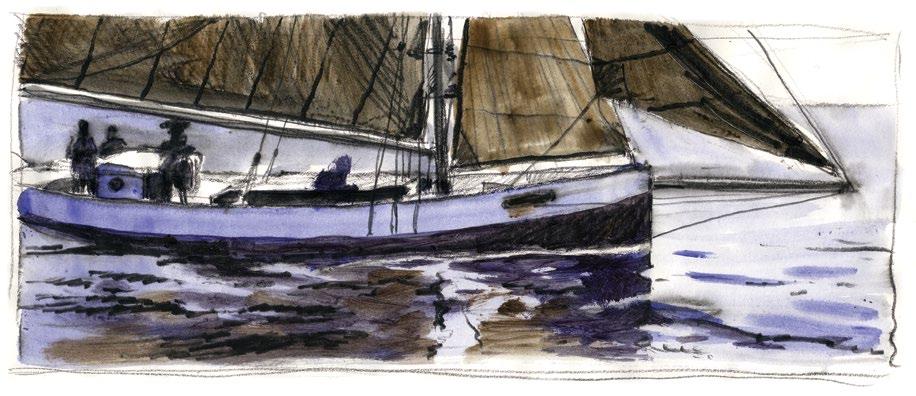
Pencil and water colour wash by Stephen Horsley.
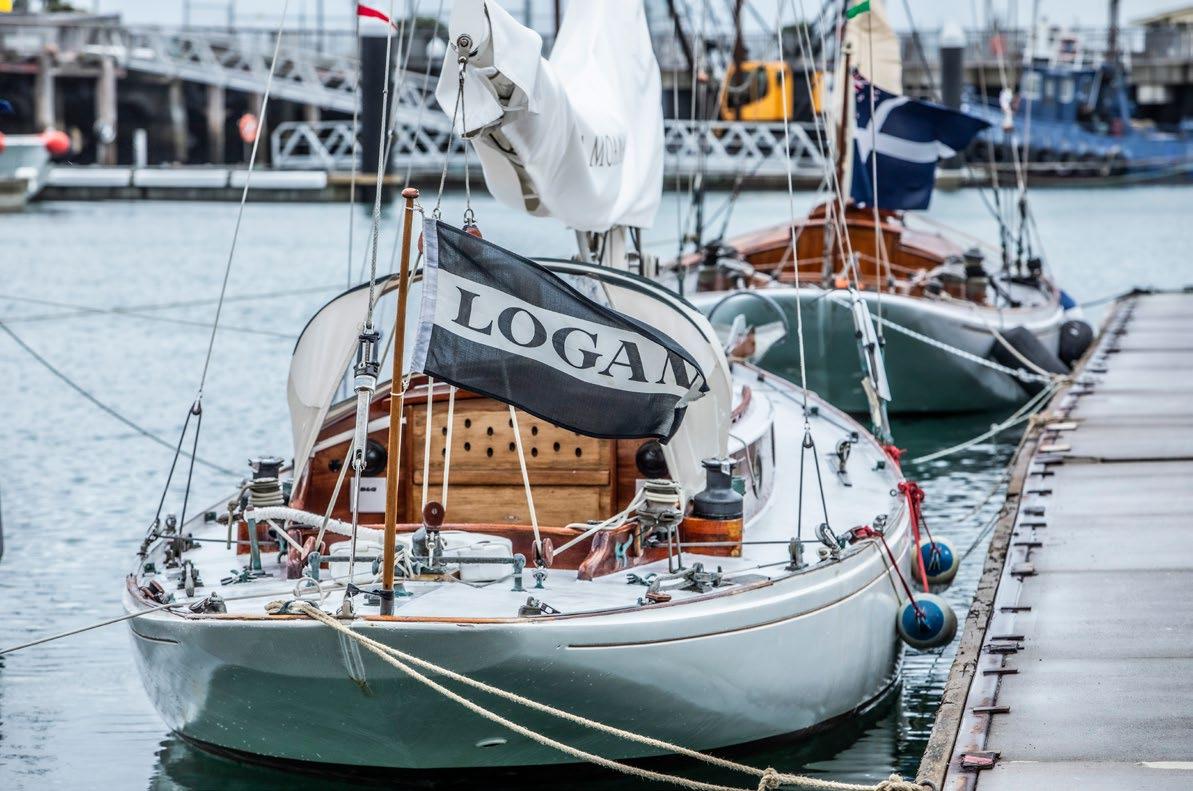
THE INAUGURAL AUCKLAND WOODEN BOAT FESTIVAL
THE START OF AN ERA
WORDS & PHOTOS: Mark Chew – Southern Wooden Boat Sailing
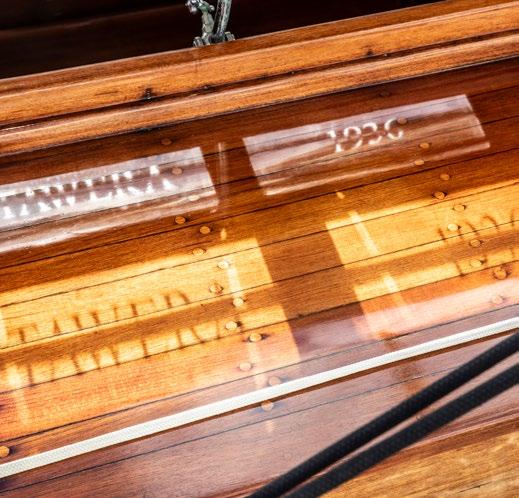


In so many respects the Wooden Boat world in New Zealand leads the way for its Trans-Tasman cousins. On a good day nine restored A Class gaff cutters can line up on a start line on the Waitemata, causing spirits to soar and hearts to pump a little faster! A kiwi culture of owning and using timber boats is engrained in all tiers of society especially in Auckland, where, in the past, a life on the water had been a normality, rather than a privilege.
So it’s surprising, that as the Australian Wooden Boat Festival celebrates its 30th anniversary this year, New Zealand has just this weekend had its first major wooden boat gathering.
Wooden Boat Festivals are strange ritualistic occasions. Beautiful (and occasionally not so beautiful) craft gather in one spot, flaunting their curvaceous bodies, and sparkling varnished jewels in the bursts of sunshine, as crowds mill around the pontoons, pontificating on the worthiness and attributes of each vessel… but on the surface, nothing much happens!
And yet the deep connectivity amongst the participants and public is not only tangible, but also highly restorative. After a couple of days strolling the walkways, absorbing the atmosphere, the meaning of life becomes a little clearer.
And so it was with the Auckland Wooden Boat Festival 2024, where around 90 boats berthed in Jellicoe Harbour, and a further 60 were displayed, some fully rigged, on land at the Viaduct Events Centre.
The team that has been behind the first of what will be many events, has pulled off a miracle. Given less than six months to make it happen, Michelle Khan & Tony Stevenson, have negotiated the tough obstacle course of local politics, multiple interest groups, no precedent, and an unrealistic timeframe, and produced a spectacular event. And perhaps most excitingly of all, the potential upside for 2026 is massive.

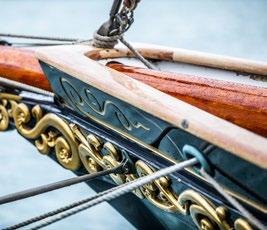

As someone who has wandered around a few wooden boat festivals in the last few years, the first thing that struck me was the underlying quality of the vessels. There is no scraping around to make up the numbers here… every vessel was in some way, a prime example of its type, whether a turn of the (last) century racing cutter, a 1960’s world beating one tonner or family owned gulf cruising motorboat. Two words explain this standard of craft… Kauri and Culture. This is a community that grew up on the edge of a vast network of islands and semi-protected waters, fringed by one of the worlds greatest, rot resistant, workable boat building timbers. Perhaps we shouldn’t be surprised. Tony Stevenson did a magnificent job of the berthing tetris, arranging the vessels thematically, telling stories via the connections, not just the individual vessels.
For instance two of the harbour’s line honours boats lay side by side, their quest for the finishing gun, spanning the first 70 years of the 20th Century.
The information board hanging between the moored boats explains their rivalry…
In the exhibition space beside Jellicoe Harbour, recently released from the clutches of Team New Zealand (remember the Americas Cup?) the festival continued with a dinghy and small power craft display. Many of New Zealand’s famous dinghy designs were represented, alongside an interactive children’s activities area,
model boats, a coffee stall serving “Johnny Wray” coffee and much, much more!
Across Viaduct Harbour at the The New Zealand Maritime Museum, there was a two day series of talks and discussions ranging from Lin Pardey telling of her 40 years of adventuring, Matua Stan Conrad talking about Pacific Voyaging and Navigation, to a panel discussion on whether there is a sustainable future for Classic Yachts, in which SWS was proud to be represented.
What will be different in 2026?
With a full two year time frame to create the next event, and the proof of concept done, we should expect great things for the 2nd Auckland Festival. Now that the community has seen what’s possible, I imagine that multiple activities surrounding the boats will enrich the long weekend. With funding that comes from industry participation and add ons, such as food offerings and live music, I expect that it won’t be long before the Auckland Wooden Boat Festival will be demanding the attention of not only New Zealanders, and their Trans-Tasman friends, but also the traditional maritime communities from Europe and America.
Kindly reproduced with permission of the author Mark Chew from southernwoodenboatsailing.com







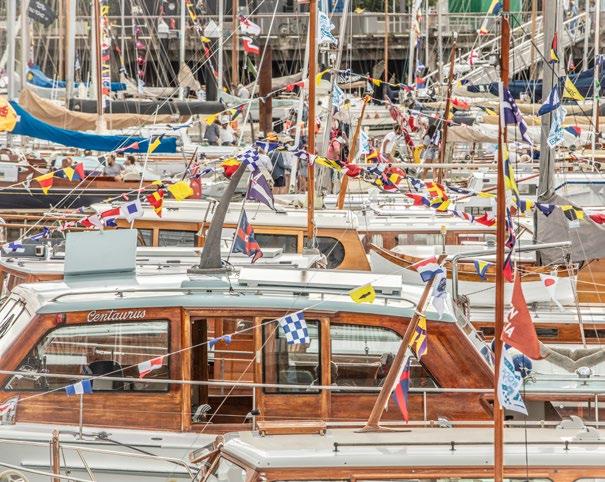






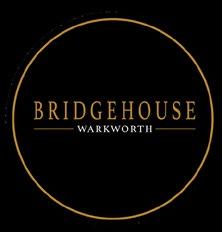


Frances B15, Corona H18 ROGER MILLS - HUMMINGBIRD

MAHURANGI REGATTA 2024 PRIZEWINNERS
MAHURANGI DIVISION - For wooden boats of pre-1955 design. Only all-wooden construction is permitted. Includes all Mullet Boats other than L Class.
LINE HONOURS - MINERVA CUP: Corona
1ST HANDICAP - MAHURANGI CUP: Katrina II
OLD GAFFERS BELL: Gloriana
(First Gaff rigged boat on handicap):
OCTAVIAS CUP: Gloriana (Eighth boat in Mahurangi Division):
LADY PAT TROPHY: Calm (First Woollacott on handicap in Mahurangi Division):
LYLE HESS TROPHY: Rogue
(First Lyle Hess Design - otherwise first 30-footer from Mahurangi Division - on handicap):
DAWDLE OF TE KAPA TROPHY: Rusty Scupper (10th to finish in the Mahurangi Division and Traditional Spirit combined):
A CLASS DIVISION - For yachts previously registered as A Class yachts and all other pre 1985 yachts over 12.20m (40ft) LOD unless an exemption is granted to sail in another division by the Regatta Committee. They sail for the A Class Trophy and the Logan Trophy.
LINE HONOURS - BOTTLE OF RUM: Rawhiti
1ST HANDICAP - ‘A’ CLASS ARIKI TROPHY: Northerner
LOGAN TROPHY: Ariki
MID-CENTURY CLASSIC DIVISION (MODERN CLASSIC)
For yachts of any construction designed before 1985 and are longer than six metres on deck and not eligible for the Mahurangi Cup Division or the Traditional Spirit Division. Includes Stewart 34 Class and Reactor 25 Class. One-design classes with five or more entrants will have prizes awarded.
LINE HONOURS - WINCH TROPHY: Prism
1ST HANDICAP - TEAK CONSTRUCTION TROPHY: Woodstock
STEWART 34 CLASS
LINE HONOURS - BOTTLE OF RUM: Prism
1ST HANDICAP - PATIKI TROPHY: Pia
TRADITIONAL SPIRIT DIVISION - For boats of any age, type, material and construction which conforms to the traditional spirit of a design predating 1955 and is not eligible for the Mahurangi Cup i.e. is a modern design but which is a close replica and built in the spirit of a traditional design but perhaps has more modern materials or construction. Includes H28 Class.
LINE HONOURS - SPIRIT OF JUSTICE TROPHY: Princess IOD
1ST HANDICAP - TRADITIONAL SPIRIT TROPHY: Princess IOD
HERRESHOFF TROPHY: Te Kawai
L CLASS 22’ MULLET BOATS
DIVISION
LINE HONOURS - BOTTLE OF RUM: Orion II
1ST HANDICAP - PCC TROPHY: Komuri
TE HAUPA DIVISION - For traditional small sailboats under 20 feet length overall. This would include all traditional New Zealand Classes like Zeddies IA’s etc. but would not include modern fibreglass classes like Lasers. It also includes any other wooden traditional style of boat such as sailing outriggers, proas, sharpies and sailing dories.
LINE HONOURS - SORCERESS CUP: Rose
1ST HANDICAP - TE HAUPA TROPHY: Kuaka
FROSTBITE CLASS
LINE HONOURS - AROUND TE HAUPA TROPHY: Phred
HANDICAPPERS TROPHY - Awarded for any Regatta highlight, navigational moment, oversight, lapse etc.
Charmer
WILL WATCH TROPHY - Decided by the Regatta Committee.
Rose
WALKER LOG TROPHY - Awarded by CYA to a participant in the Classic Launch Parade
Menai
JOHN COLE TROPHY - Decided by Cimino Cole.
Jon Tuohey




Images: LUCA ROCCATI

MAHURANGI CUP
Classic Wooden Yachts Pre 1955 Design
BOAT SAIL LOA DESIGN/BUILT, CLASS, DESIGN RIG SKIPPER/OWNER NUMBER
Calm 462 22ft 1942/1959 Bert Woollacott
Bermudan Sloop Lance Heenan
Corona H18 26ft 1936 Charles Collings Gaff Richard Allen
Destiny II 1531 21ft 1930s Gaff Simon van der Zeyden
Frances B15 38ft 1905/1906 Arch Logan Gaff Cutter Iain Valentine
Gloriana C8 34ft 1892
Robert and Arch Logan Gaff Cutter Giles Jordan
Gypsy C46 34ft 1938/1939 Arch Logan
Jenanne K2 38ft 1945/1950 Bill Couldrey
Bermudan Cutter Dimitar Penchev
Fractional Bermudan Peter Mence
Julienne H22 22ft 1929/2008 L. Francis Herreshoff Sloop Alfons Reitsma
Kate - 38ft 1898 E. Thompson & Son Former trading gaff cutter Bernard Rhodes
Katrina II K100 41ft 1945/1957 Bob Stewart
Kotuku 216 34ft 1923 Col Wild
Fractional Bermudan Jonathan Tuohey
Fractional Cutter Tai Smyth
Nomad H5 26ft 1927 Charles Collings Gaff Gary Murrie
Nordic - 26ft 1926/33-48
Bermudan Cutter Sam Harkin
Rogue B4 32ft 1892 Charles Bailey Jnr Gaff Cutter Pheroze Jagose
Scout NZL 1 32ft 1906/1909 Ewen Bros. 6m Bermudan Sloop Callum Jones
Shearwater II R60 35ft 1951/1960 Gaff Ketch Andrew Tremain
Temptress 788 31ft 6in 1951/1952 Fred Lidgard Bermudan Sloop Miles Bundle
Vega - 43ft 1900/1948 Colin Archer Ketch Mary Gallagher

Gloriana C8, Jenanne K2 ROGER MILLS

MID-CENTURY CLASSICS
Yachts Designed and Built between 1955 and 1985
BOAT SAIL LOA DESIGN/BUILT, CLASS, DESIGN RIG SKIPPER/OWNER NUMBER SAIL LOA DESIGN/BUILT, CLASS, DESIGN RIG NUMBER
Allons-y 635 26ft 1962/1964 Des Townson Serene Sloop Grant Cossey
Angara 3601 34ft 1965/1973 Des Townson Sloop Glenn Starr
Animal House 4432 6.7m 1962/1981 Des Townson Pied Piper Fractional Sloop Tim Snedden
Apparition 5283 35ft 1983/1984 Murray Ross Fractional Sloop Marcel Vroege
Arethusa 3591 39ft 11in 1977 Beau Birdsall Fractional Sloop Garth Naulls
Bluegrass 4477 11.6 m 1974/1977 John Lidgard Bermudan Cutter Maxime Goutard
Chico Too 4994 9.3m 1970/1983 Gary Mull - Chico 30 Sloop Trish Beken
Diablo 1342 8.7m 1970 Sparkman and Stephens Bermudan Peter Bourke
Diamonds 5910 34ft 1982/1986 Bruce Farr Sloop Andrew Neame
Flyaway 6848 28ft 1970s/1995 Laurie Davidson Sloop Edward Hart
Freelance 4724 35ft 10in 1982 Des Townson Bermudan Sloop Peter Jacbi
Grantham Flyer 4430 35ft 6in 1976 Gary Mull Fractional Sloop Paul Jennings
Harmony 684 22ft 1964/1968 Des Townson Fractional Sloop Angus Adamson
Hot Water Pipe 4736 22ft 1962/1979 Des Townson Fractional Sloop Leo Crawford
Jenanne II 2022 36ft 1972/1974 Des Townson Bermudan Sloop Graham Gibbons
Love 17 8.185m 1964/1975 Jan Herman Linge - Soling Fractional Sloop Charlie McKenzie
Mariah 8183 10.8m 1985/1989 Gary Mull Sloop John Murray
Obsidian 1705 34ft 1968/1975 John Spencer
Bermudan Sloop Kevin Hawkins
Olympia 2270 36ft 1973/1975 Des Townson Sloop Pete Blundell
Optomystic 1960 39ft 1970/1971 Bob Salthouse Bermudan Sloop Jack Hargraves
Party Piedy 2328 22ft 1964/1974 Des Townson Fractional Sloop Samuel Hulston
Peer Gynt 2429 32ft 1971/1975 Des Townson Bermudan Sloop Patrick Londeen
Penury 6979 34ft 1983/1987 Bruce Farr Fractional Sloop Michael Paauwe
Rainbird 144 40ft 1963/1964 Peter Nelson Bermudan Sloop Steve Cranch
Rat Catcher 2856 22ft 1964/1976 Des Townson Fractional Sloop Gavin Woodward
Resolute 2388 32ft 1970/1975 Des Townson Sloop Richard Evans
Starlight 936 9.96m 1969/1970 Des Townson Bermudan Sloop Richard Dodd
Strega 4203 11.1m 1980/1981 Don Senior Fractional Sloop Garry Thompson
Swamp Fox 4264 32ft 1980/1986 Cal Crooks Fractional Sloop Sean Patterson
Talent 3116 10.3m 1976/1978 Des Townson T34 Bermudan Sloop Chris Gudgeon
Te Muri 3694 11m 1976/1977 Des Townson Bermudan Sloop Graham Russell
Torque Flight 4628 10.67m 1978/1982 Des Townson Sloop Nigel Cane
Woodstock 3936 22ft 1962/1984 Des Townson Fractional Sloop Guy Gager
Zeppo 3374 9.31m 1970/1977 Gary Mull Bermudan Grant Daniel
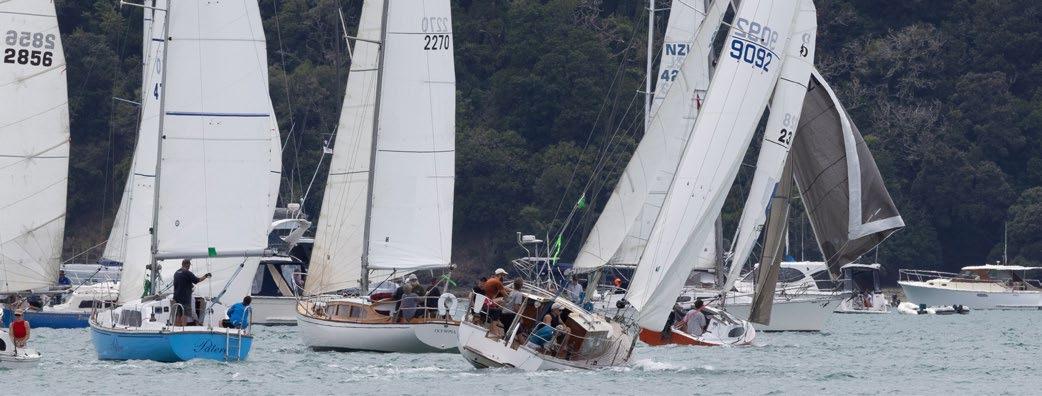

STEWART 34
BOAT SAIL LOA DESIGN/BUILT, CLASS, DESIGN RIG SKIPPER/OWNER NUMBER
Patere 4760 34ft 1959/1984 Bob Stewart Bermudan Sloop Alan Retter
Pia 9092 34ft 1959/1972 Bob Stewart Bermudan Sloop Kevin McLaren
Precedent 1880 34ft 1959/1973 Bob Stewart Bermudan Sloop Mike Parker
Prince Hal 41 34ft 1959/1984 Bob Stewart Bermudan Sloop Brett Henshaw
Prism 5333 34ft 1959/1984 Bob Stewart Bermudan Sloop Tom Laurie
Psyche 4642 34ft 1959/1981 Bob Stewart Bermudan Sloop Paul Groom


A CLASS
Including Yachts over 40ft Designed and Built before 1985
BOAT SAIL LOA DESIGN/BUILT, CLASS, DESIGN RIG SKIPPER/OWNER NUMBER
Achernar A66 41ft 1965/1966 Bob Stewart Bermudan Sloop James Buttle
Advantage 3445 43ft 1975/1976 John Lidgard Fractional Sloop Derek Brandt
Ariki A3 54ft 1904/1905 Arch Logan Gaff Cutter Andrew Barnes
Arohia A27 46ft 1948/1949 Col Wild Masthead Sloop Wade Lewis
Gallivant 5043 52ft 6in 1983/1985 Alan Warwick Cutter Hugh Gladwell
Ida A11 44ft 6in 1895 Charles Bailey Jnr. Gaff Cutter Andy Ball
Innismara A81 67ft 1969 Bernie Schmidt Sloop Thomas Rutter
Jipcho 2062 42ft 1974/1975 Jim Young Sloop Adam Bundle
Little Jim A16 42ft 10in 1934 Arch Logan Bermudan Sloop James Mortimer
Memphis 6220 42ft 1985/1986 Alan Wright
Bermudan Cutter Warren Henderson
Northerner 43 49ft 4in 1963 Bob Stewart Fractional Sloop
Prize A15 43ft 1923 Chas Bailey Jnr
Mike Webster
Bermudan Cutter Chad Thompson
Rainbow A7 50ft 1898 Arch Logan Gaff Cutter Hamish Ross
Rawhiti A2 54ft 1905 Arch Logan Gaff Cutter Peter Brookes
Renown 5001 42ft 1979/1983 John Lidgard - 42
Tawera A18 50ft 1935/1936 Arch Logan
Totolo 970 46ft 1969/1970 Jim Young
Bermudan Cutter Geoff Evans
Bermudan Sloop Mike Mahoney
Bermudan Sloop Steve Horton
Little Jim, Arohia ROGER MILLS- ROGER MILLS - HUMMINGBIRD VIDEO AND PHOTOGRAPHY

TE HAUPA
Classic Wooden Yachts Under 20ft
BOAT SAIL LOA DESIGN/BUILT, CLASS, DESIGN RIG SKIPPER/OWNER NUMBER
Charmer 16 4.9m 1985 Geoff Entrican, Spritsail
Hannah 375 18ft
1962/1975 Breckenridge Marshall, Cat rig
Janette - 3.68m 1989 John Welsford, Lug
Korora - 12ft 8in
1993/2006 John Welsford Gaff, Yawl
Kuaka 3.68m 1994 Sprit
Mistress M50 18ft
1922/1992 Arch Logan, Fractional
Morvarch 10043 5.7m 2022 Roger Dongray, Gaff
Native - 16ft 10in
Rose 3877 16ft
Sayorse - 5.7m
1959/1975 John Leather, Oyster Class Balanced lug
1985/2019 Joel White, Sloop
1980s/2010-11 Philip Bolger, Lateen
Swell - 4.9m 1998 Steve Fleming, Bermudan


Geoff Beresford
Robert Dryfhout
Mike Brockie
Sam Cowper
Alexander Kennedy
Jon Whisker
Keith Williams
Nigel Wright
Dave Jackson
Lance Stephens
Steve Lucas


FROSTBITES & SAILING DINGHIES
BOAT SAIL LOA DESIGN/BUILT, CLASS, DESIGN RIG SKIPPER/OWNER NUMBER
Accolade 310 11ft 6in
Amber 23 11ft 6in
Chilly 39 11ft 6in
Classico 312 11ft 6in
Jabberwocky 124 11ft 6in
Phred 147 11ft 6in
Shadze 206 11ft 6in
Kina 82 11ft 6in
Phred Bare KZ237 15ft
1937/1994 Jack Brooke, Frostbite, Cat Rig
1937/1970 Jack Brooke, Frostbite, Cat Rig
1937/1970 Jack Brooke, Frostbite, Cat Rig
1937/2018 Jack Brooke, Frostbite, Cat Rig
1937/1995 Jack Brooke, Frostbite, Cat Rig
1937/1980 Jack Brooke, Frostbite, Cat Rig
1937/1987 Jack Brooke, Frostbite, Cat Rig
1937/1970 Jack Brooke, Frostbite, Cat Rig
1949/1980 International Finn Dinghy Cat Rig
Colin Pawson
John McShane
Pim Rademakers
James Ledingham
Brian Trubovich
Tom Parrish
Geoff Shearman
Paddy O'Rourke
Graham Lambert
Korora ROGER MILLS - HUMMINGBIRD VIDEO AND PHOTOGRAPHY
Kuaka ROGER MILLS - HUMMINGBIRD VIDEO AND PHOTOGRAPHY
Chilli ROGER MILLS - HUMMINGBIRD VIDEO AND PHOTOGRAPHY
Mistress ROGER MILLS - HUMMINGBIRD VIDEO AND PHOTOGRAPHY
L CLASS MULLET BOATS
BOAT SAIL LOA DESIGN/BUILT, CLASS, DESIGN RIG SKIPPER/OWNER NUMBER
Buona Sera L43 22ft 1961/1965
Morrie Palmer Fractional Bermudan
Komuri L7 22ft 1930 Fred Lidgard
Martanza L60 22ft 1973/1990 Martin Robertson
Michael Knuckey
Fractional Bermudan John Grinter
Fractional Bermudan Tania Nigh
Melita L28 22ft 1934/1935 Percy Voss Gaff Nick Atkinson
Orion II L53 22ft 1973/1975 Martin Robertson
Rangi Manu L52 22ft 1976/1978 John Gladden
Fractional Bermudan
Fractional Bermudan
Martin Robertson
Tim Merkens


TRADITIONAL SPIRIT
Yachts of any age and construction conforming to a traditional spirit in design
BOAT SAIL LOA DESIGN/BUILT, CLASS, DESIGN RIG
SKIPPER/OWNER NUMBER
Breeze - 19m 1983 Ralph Sewell, Square rigged Brigantine Bob Hawkins
Princess IOD 102 24ft
Rusty Scupper 4018 29ft
1936/1975 Bjarne Aas, International OneDesign, Fractional Sloop Chris Dickson
1942/1978 L. Francis Herreshoff, H28 sloop
Roger Woodman
Sandbourne - 29ft 1942/1987 L. Francis Herreshoff, H28 sloop Carl Brett
Te Kawai 8047 29ft 1942/1965 L. Francis Herreshoff, H28 sloop
Mike Jenkin

Rangi Manu L52 ROGER MILLS - HUMMINGBIRD VIDEO AND PHOTOGRAPHY
AT ANCHOR
PASSAGES: CAPE HORN AND BEYOND
By Lin Pardey.
Softback, 0.5 kgs, 229mm x 153mm. 304 pages, colour and black & white photographs
NZ$45.00
Join Lin as she shares challenging sailing, gentle voyages, the shoreside encounters that await once you venture into the world of cruising under sail. Far more than just a sailing adventure, this book is also a true memoir.

As she and Larry sailed north from Cape Horn to Canada, then westward across the Pacific, they had to weather the emotional passages that come with growing older. Lin chronicles the last years she shared with Larry, the solo adventure that followed and, eventually, the romance and challenge of building a new life and voyaging onward with a different partner after David sailed in to anchor near her island home.
Passages: Cape Horn and Beyond will appeal to sailors of all generations as Lin pours her heart out to tell tales of sailing through gales and calms, adventures small and large. It is a love story — of sailing, of the sea, and of the two men who have shared Lin’s life.
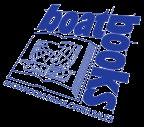
A MARITIME HERITAGE - OUT OF AUCKLAND REVISITED
By Robert J. Hawkins
Original
titles
by
Clifford W. Hawkins
NZ$65.00

New Zealand’s small boat sailors, Designers and builders, whose skills are recognised internationally, owe much to their inheritance of a comparatively short, but exceedingly active history of things nautical.
From the first known named craft, the Providence, built by sealers in 1792, necessity motivated the early settlers of New Zealand from both the British Isles and North America to design, build and sail craft appropriate to local and overseas trade. Cutters, ketches and scows for the tricky estuaries and rivers; schooners for the missionaries, blackbirders and island traders; and barques and brigantines for further afield.
In this book the author has provided a detailed and interesting account of the builders and craft of this period, when the only power was the wind and the only materials were the excellent native timbers. Meticulous research, as well as the author’s own experience of life on commercial sailing vessels, makes the text authoritative, and the photographs, many from the author’s own collection, provide superb visual reference.
A Maritime Heritage is a revised and enlarged version of Out of Auckland which was published by Clifford W Hawkins in 1960. As well as being enhanced by a considerable number of additional photographs the new version retains the valuable Register of Ships and a comprehensive index.
Available now as a limited edition reprint.
Book Reviews
SWIRLY WORLD LOST AT SEA
By Andrew Fagan. Paperback, 0.55kg, 234mm x 153mm. 311 pages, full colour photographs.
NZ$40.00 + delivery.
In January 2022, renowned solo sailor Andrew Fagan set sail from Auckland, New Zealand, in his tiny 5.18m sloop-rigged plywood yacht, Swirly World. He was attempting to set the record for ‘the smallest boat to sail around the world solo via the Great Capes’.

The voyage itself was estimated to take fourteen months non-stop. That meant fourteen months of food, water… and resolve.
He first needed to cross the vast South Pacific Ocean towards Cape Horn, one of the most feared and perilous sea routes in the world.
Written with his trademark humour and a solemn sense of sailing awareness, Swirly World Lost At Sea, is part sailing adventure, part memoir, and is underpinned by a clinical understanding of both the brutality and beauty of the sea.

AN ISLAND TO ONESELF.
By Tom
Neale, Hardback, 0.5 kgs, 234mm x 153mm. 240 pages, full colour photographs.
NZ$45.00 + delivery.
A South Seas classic since 1966, this is the story of one New Zealander brave enough to do what we have all now and then dreamed of doing – live alone on a desert island.

In his youth Tom Neale was an ordinary seaman and for years a shopkeeper among the Cook Islands, but he was in his fifties when he turned his back on society to live alone on the South Pacific atoll of Suvarov (now known as Suwarrow). With him he took nothing but a couple of cats, some odds and ends to tie and bolt his meagre dwelling, and the strength of body and mind to survive.
In the six years over which Neale wrote this autobiography there were heroic moments when he battled the elements: the furious hurricane that engulfed the coral islet; five desperate hours in a stormy lagoon with a cripplingly strained back; even a reluctant bit of blood-letting on wild pigs and a mammoth sea turtle.

But along with the toils and perils were years of peace and beauty: building a chicken coop; baking with banana leaves; the delight drawn from a sip of brandy; and taming a wild duck. All of these simple pleasures are a reminder of what we take for granted in our own lives today.




Distributor of Quality Sailing Hardware

Blocks, Cleats & Clutches Track & Traveller Systems Ba;en Car Systems, Furlers Stainless & Rigging Hardware Sailing Gear & Accessories
Contact:
georgec@mainstaymarine.co.nz

Stainless Steel Winches Self-‐Tailing, Classic, Electric Winch Accessories Service Kits, Spares, Winch Handles Automa2c Bailers



Temptress
Centaurus




Build as long & as wide as you want
Pontoon & Houseboats, Jetties, Swim/picnic rafts, Floating Docks , Walkways, Work barges, Aquaculture, Irrigation, Stable Boating for wheel chair & mobility scooters. The new Pontoonz Dinghy Tender - Row, Tow or Stow


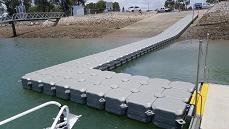

With over 35 years of experience, we offer high-quality, sustainable timber products to the boat building industry.



Weatherboards, Fascia & Mouldings, TG&V Paneling, Dressed Boards, Veneer Board, Plywood, Joinery and Decking
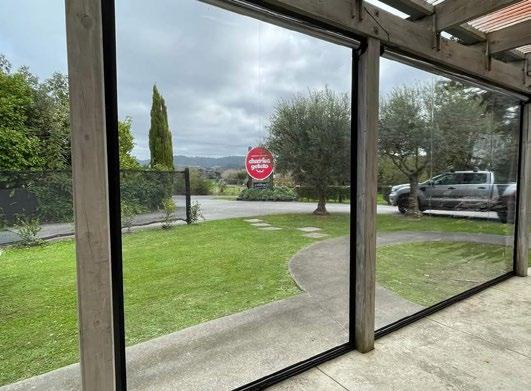





https://bbstimbers.co.nz/
Chatfield Marine
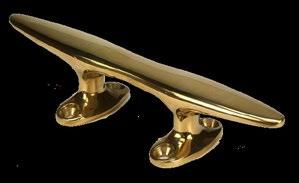


• Quality deck hardware • Game fishing brackets, poles and Elite game chairs
Hillcrest, Auckland, New Zealand. +64 9 444 9031 sales@chatfieldmarine.co.nz chatfieldmarine.co.nz












Todd Wilkin Grant Dixon



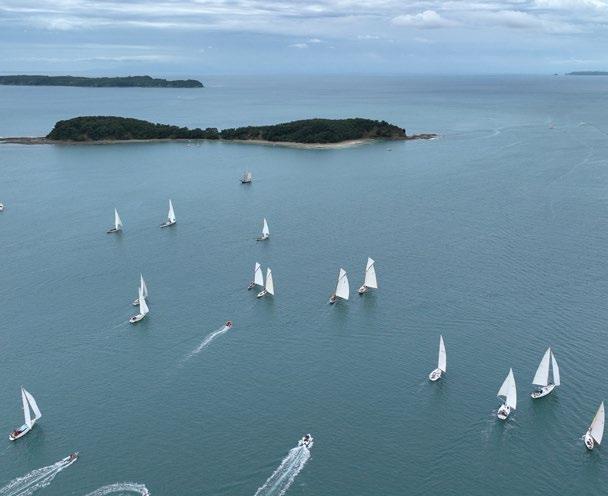



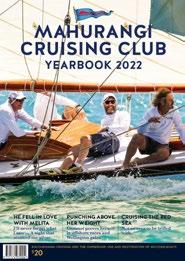














BOATBUILDING EXTENSIONS
RESTORATIONS
REFITS & REPAIRS
HARD TOPS
ALL PAINT WORK
VARNISH WORK
UNDERCOVER SLIPWAY
ANTIFOULING
BOAT BROKERAGE
MARINE INSURANCE
SHIP CHANDLERY
PROVEDORE SERVICE
BOAT GROOMING
www.leesboatbuilders.co.nz
info@leesboatbuilders.co.nz
Contact Greg Lees
09 425 8811 / 0274 757711
